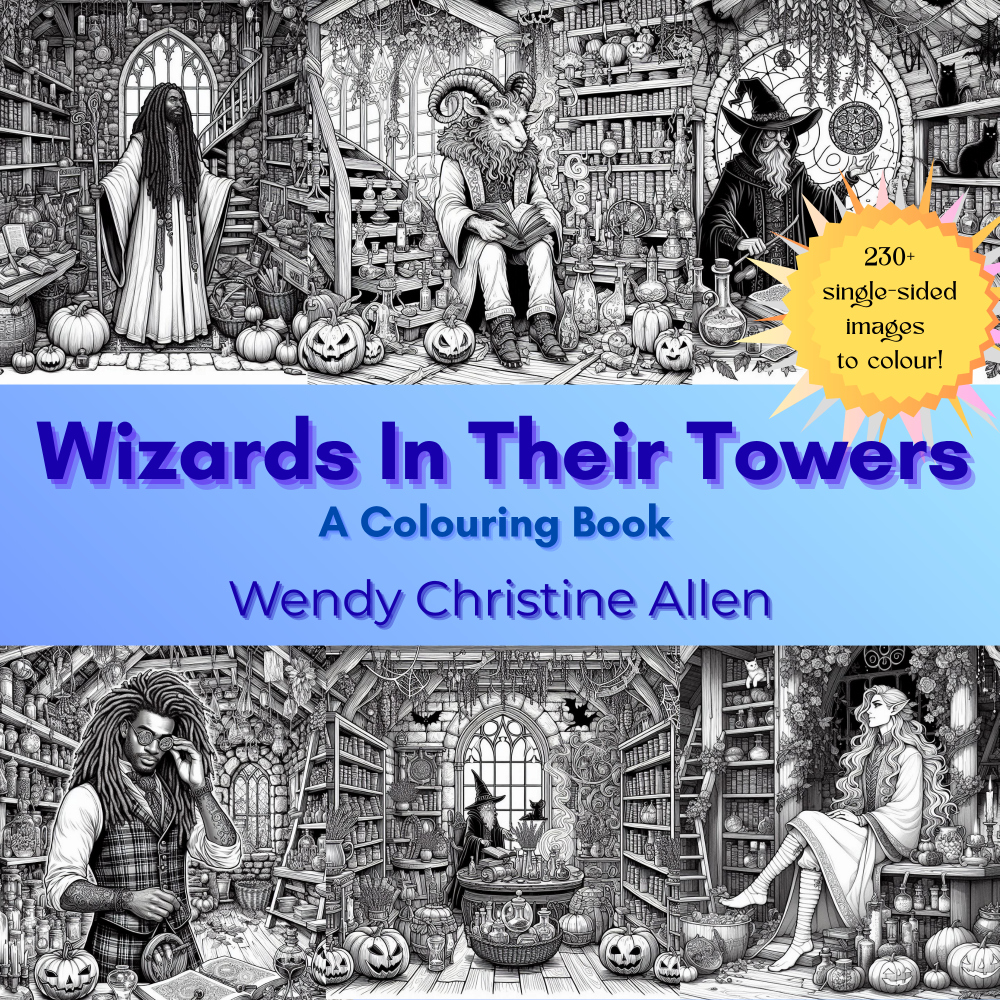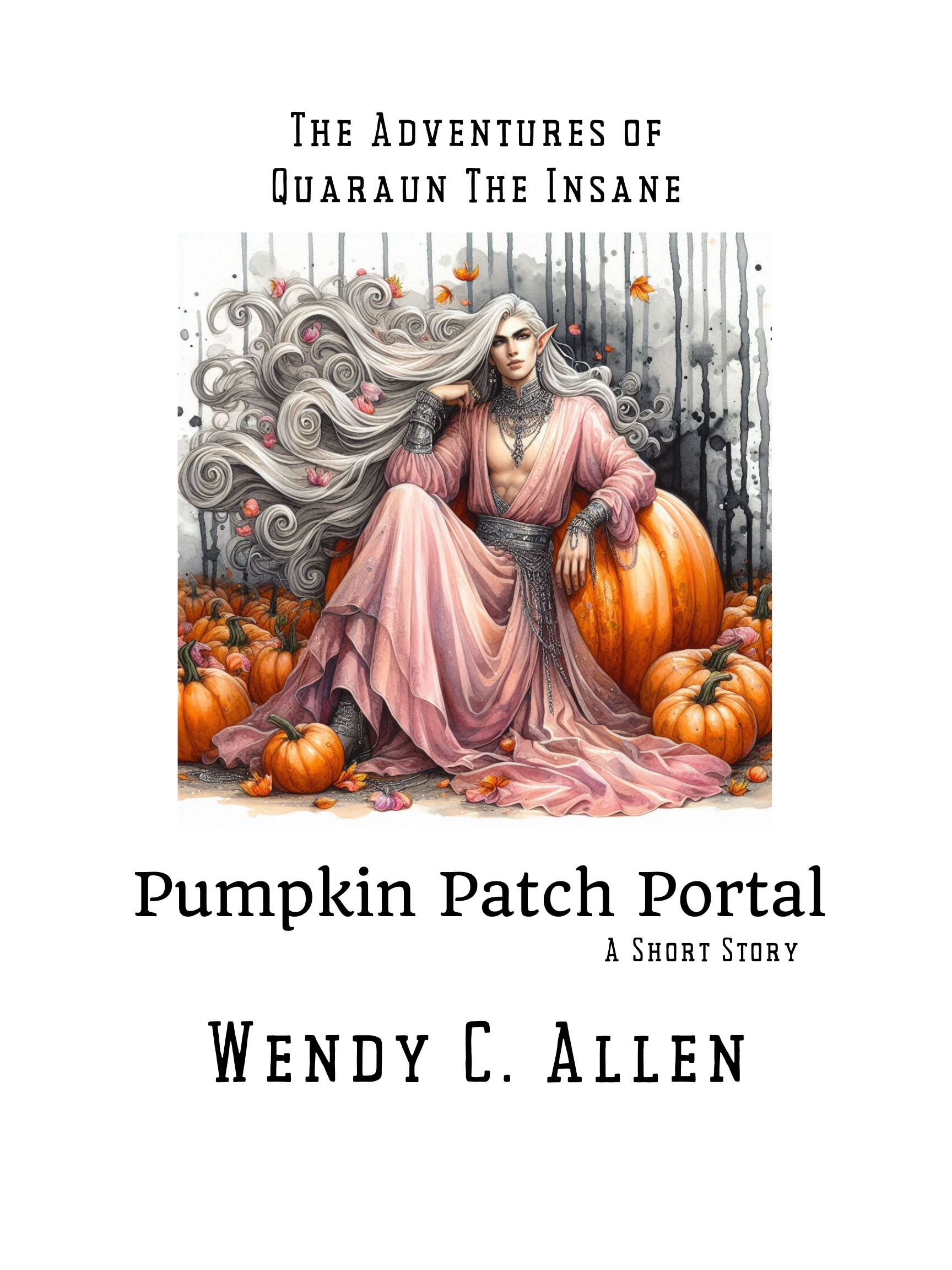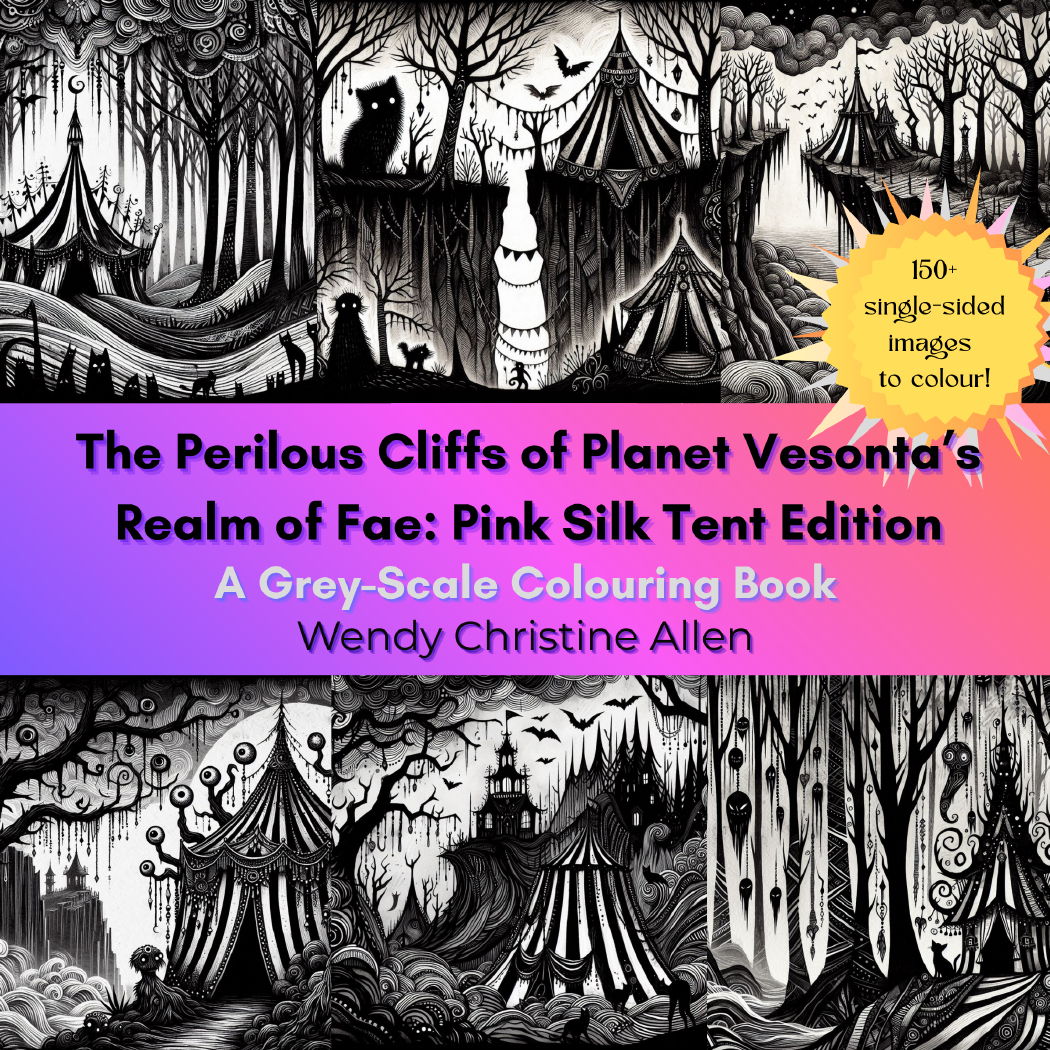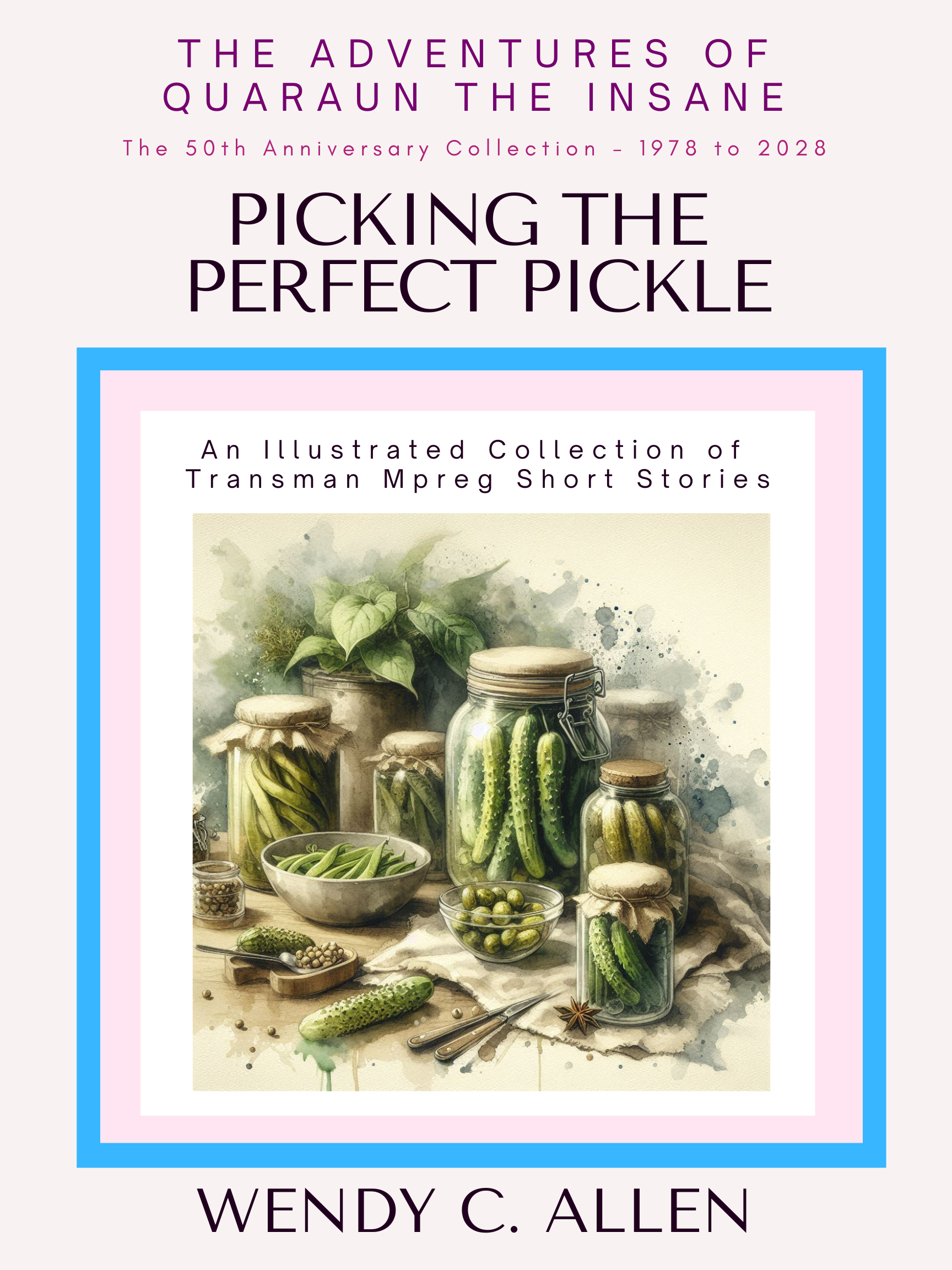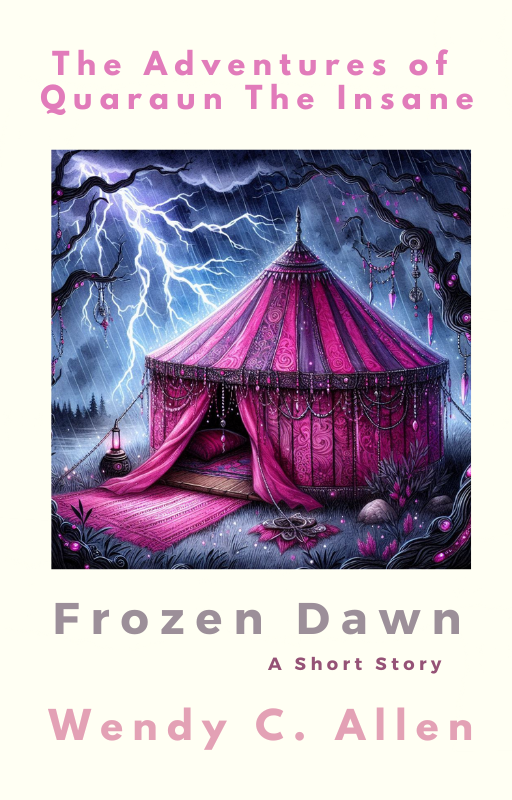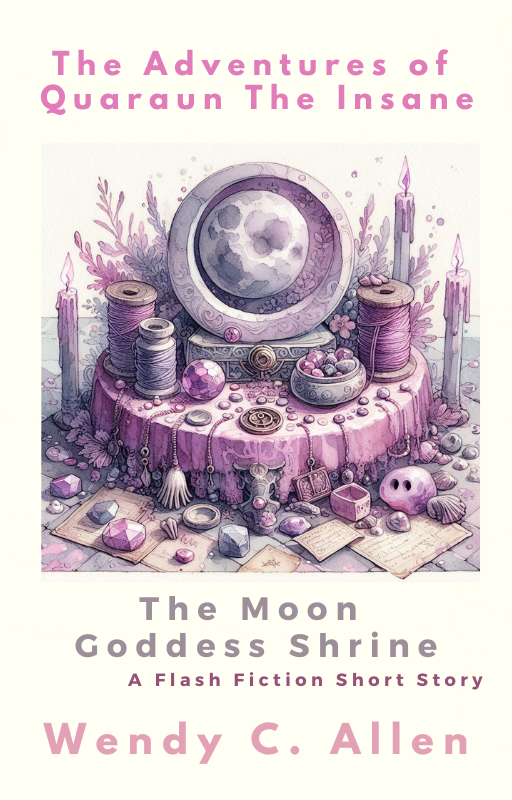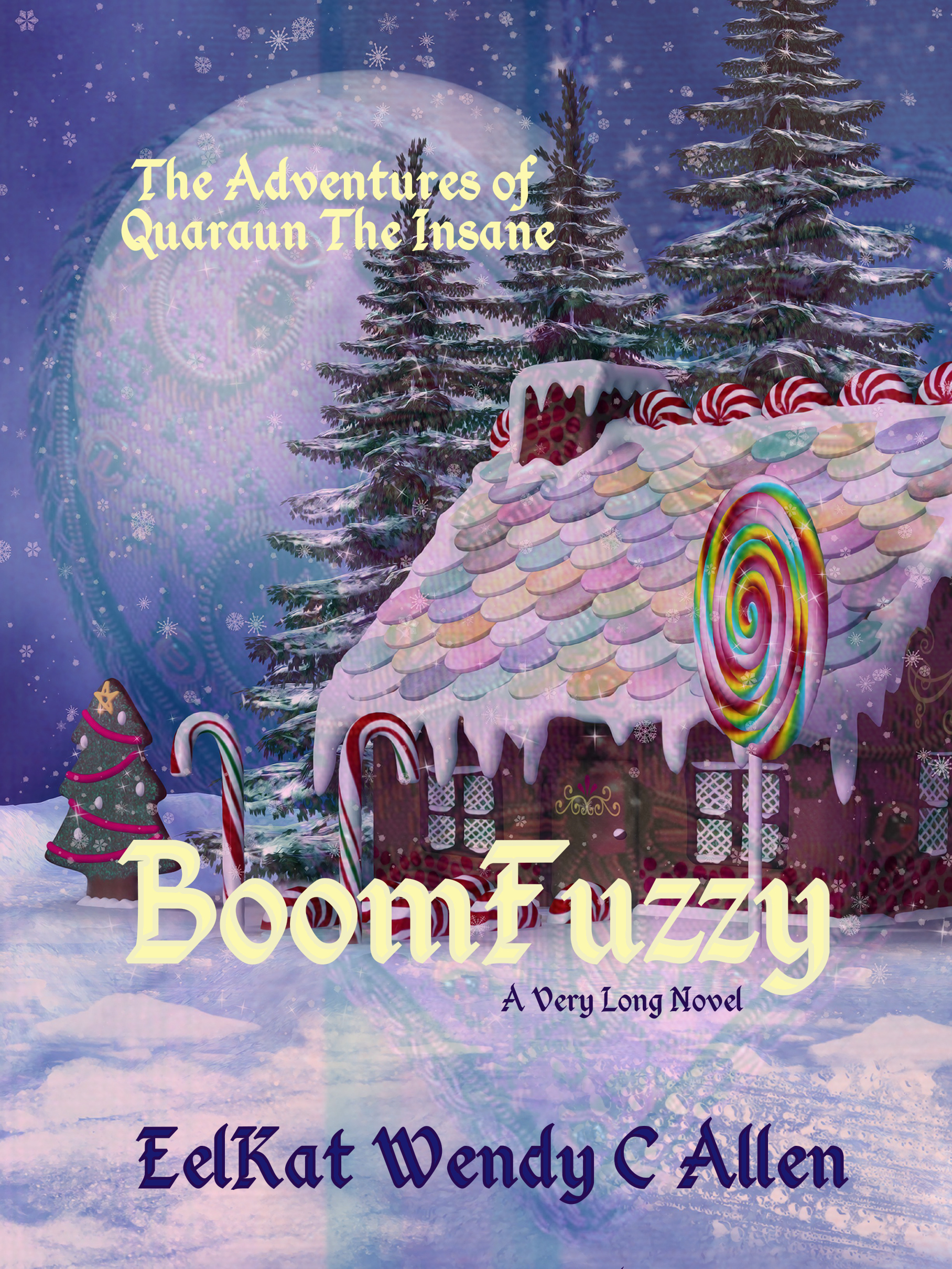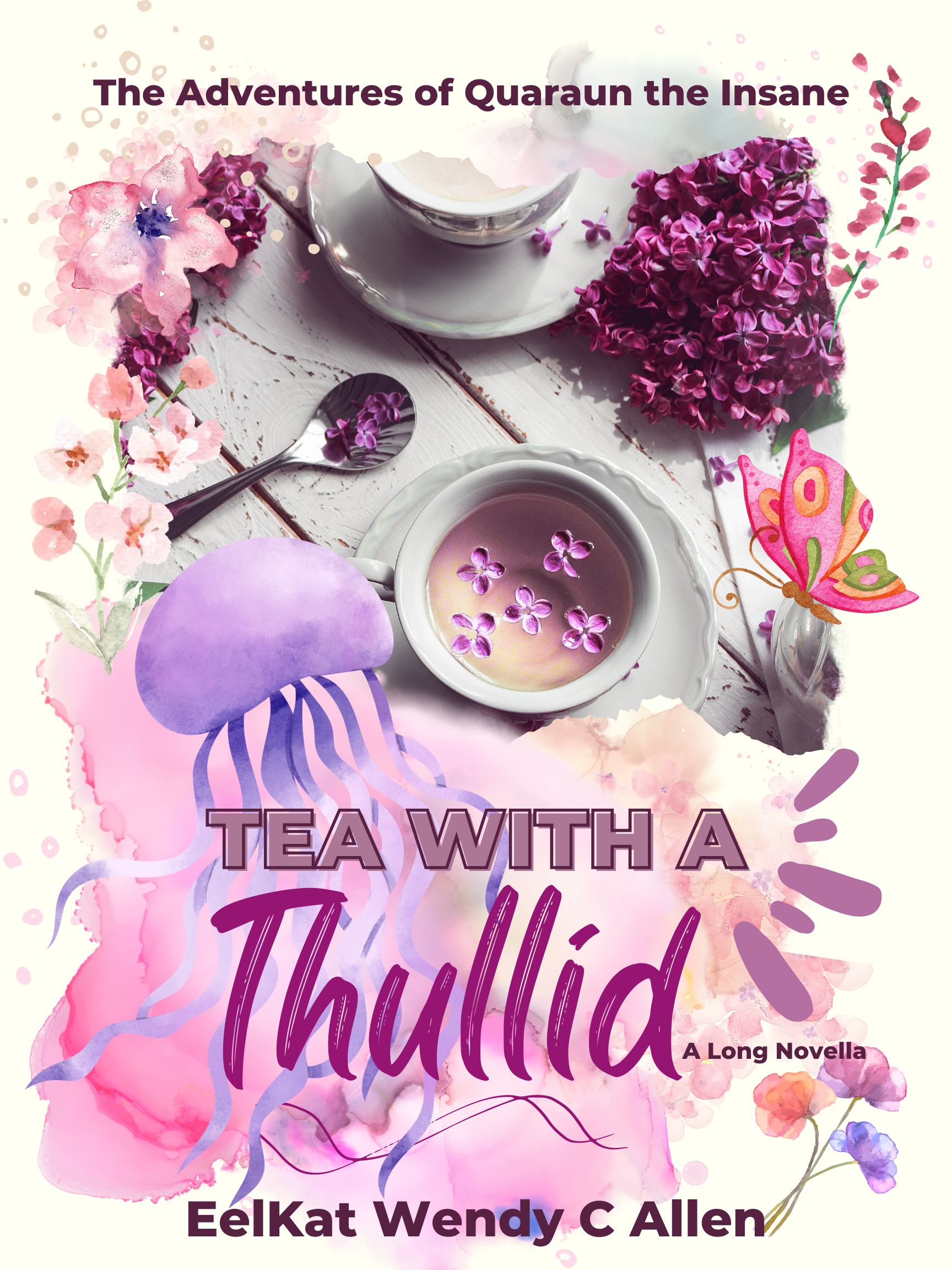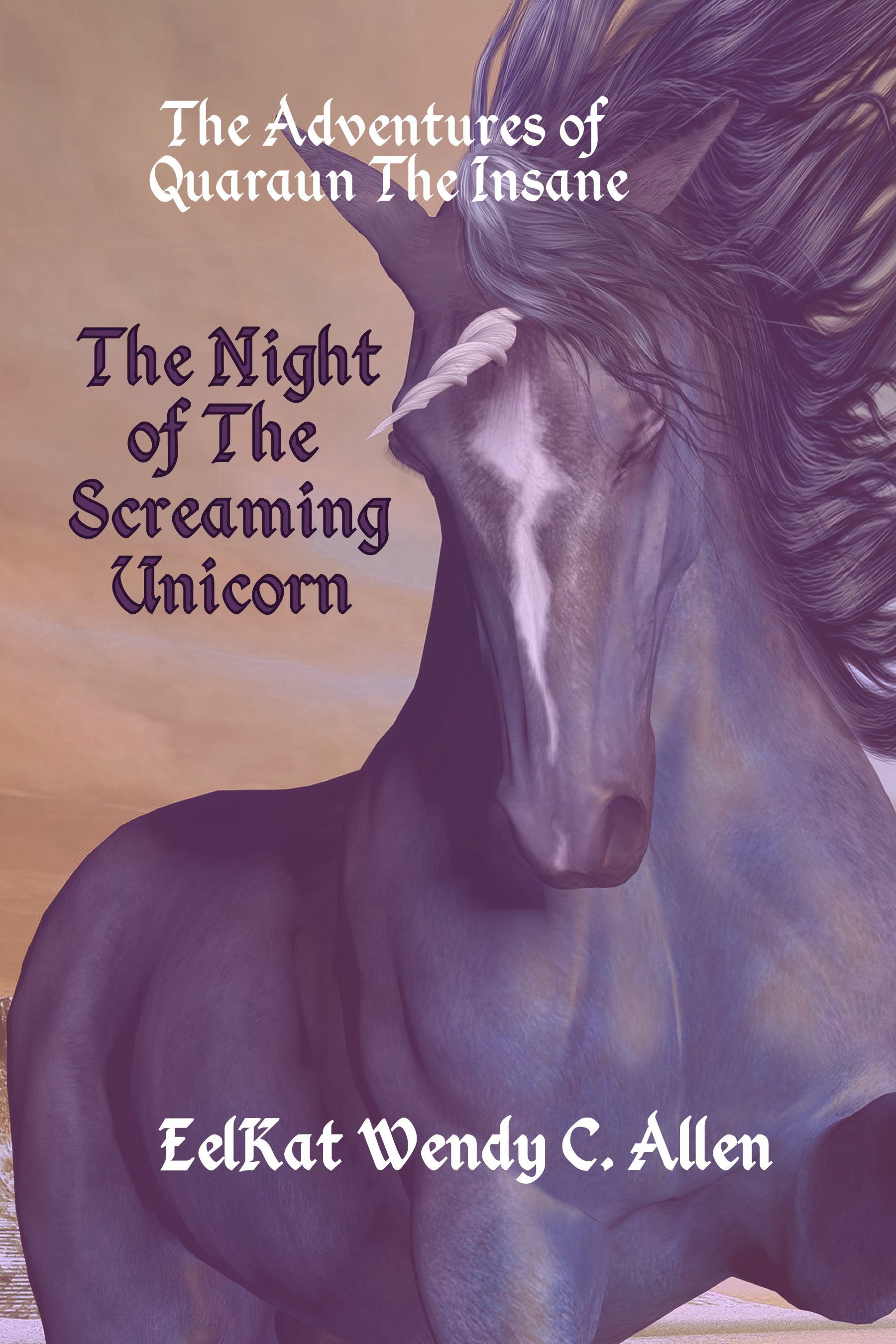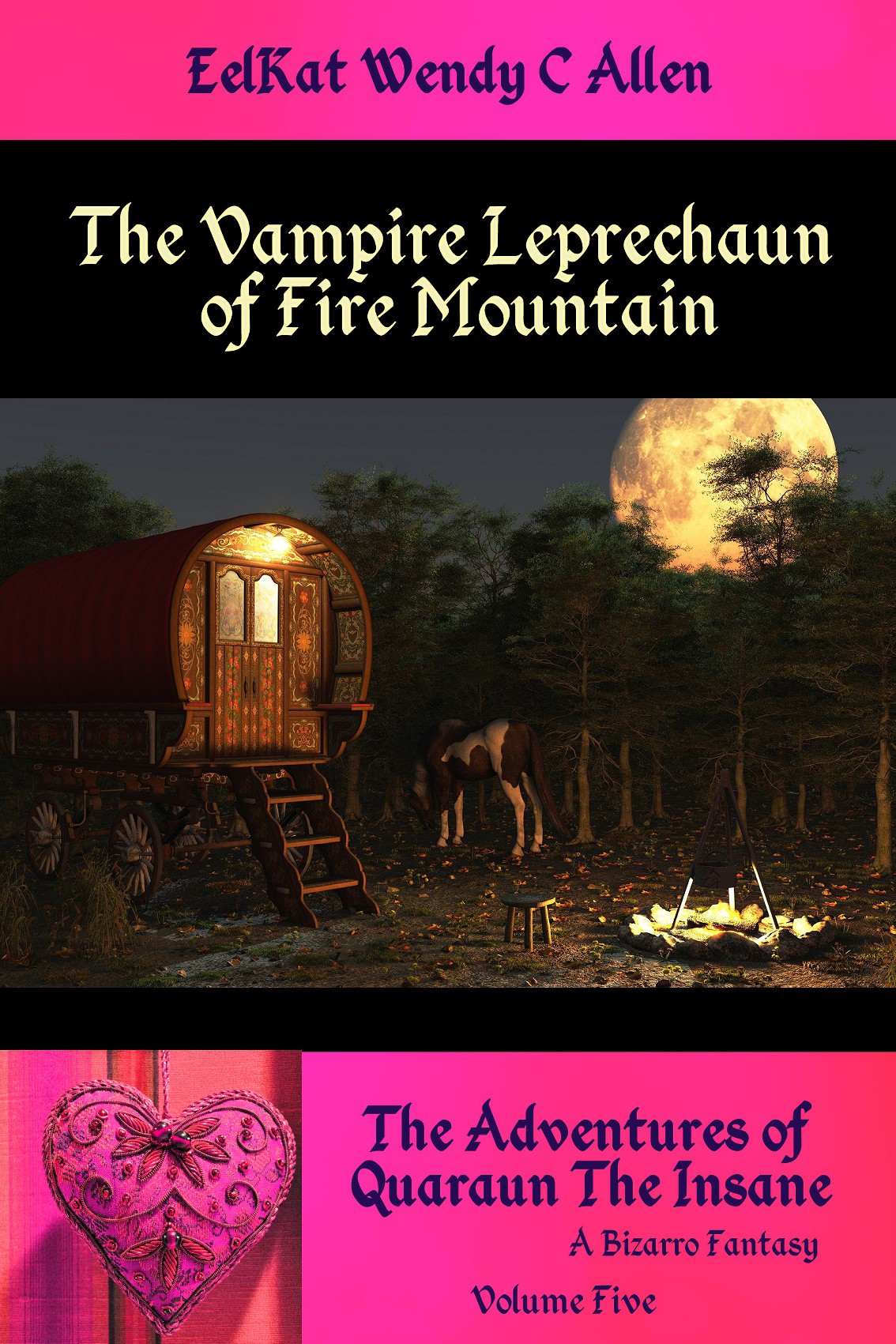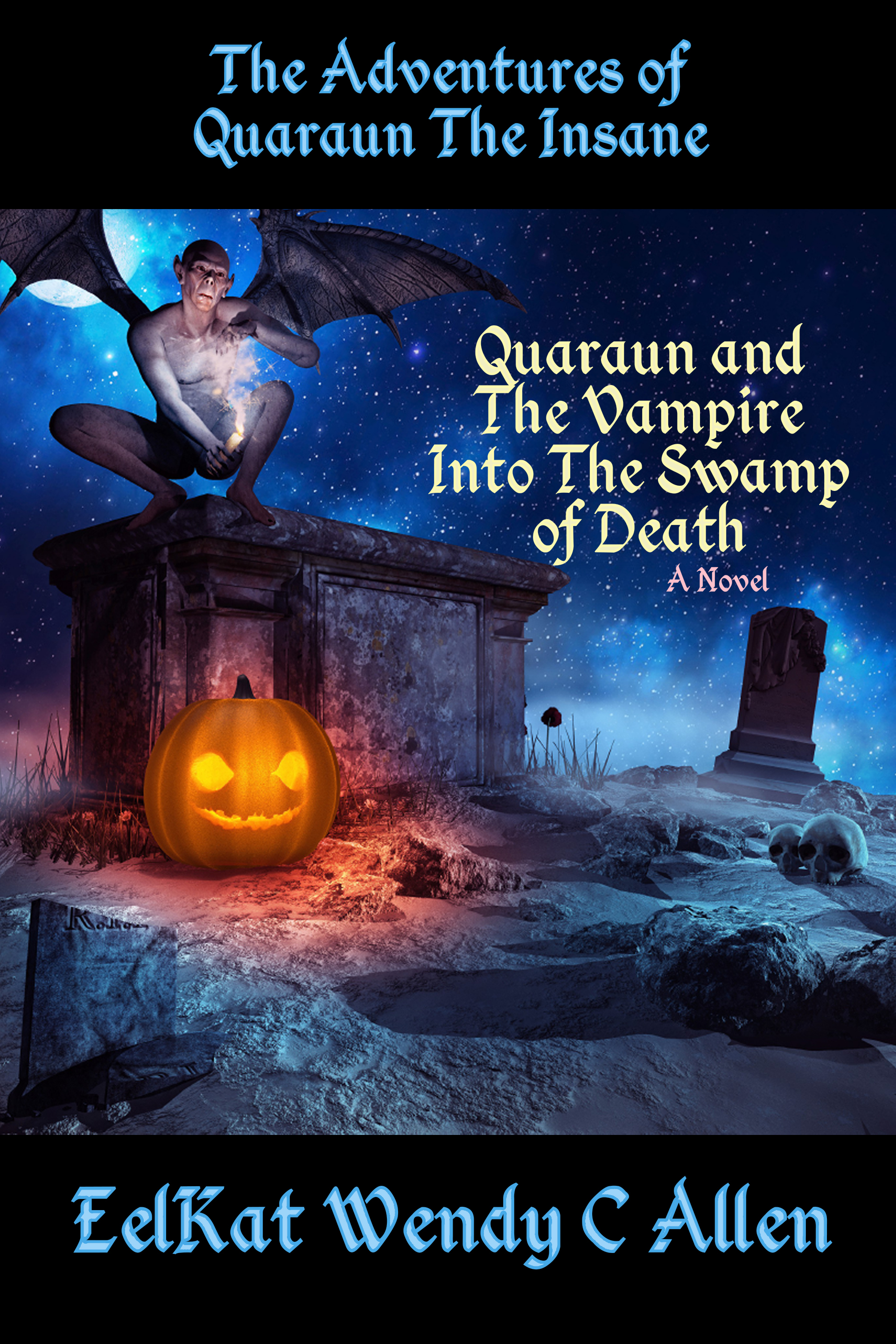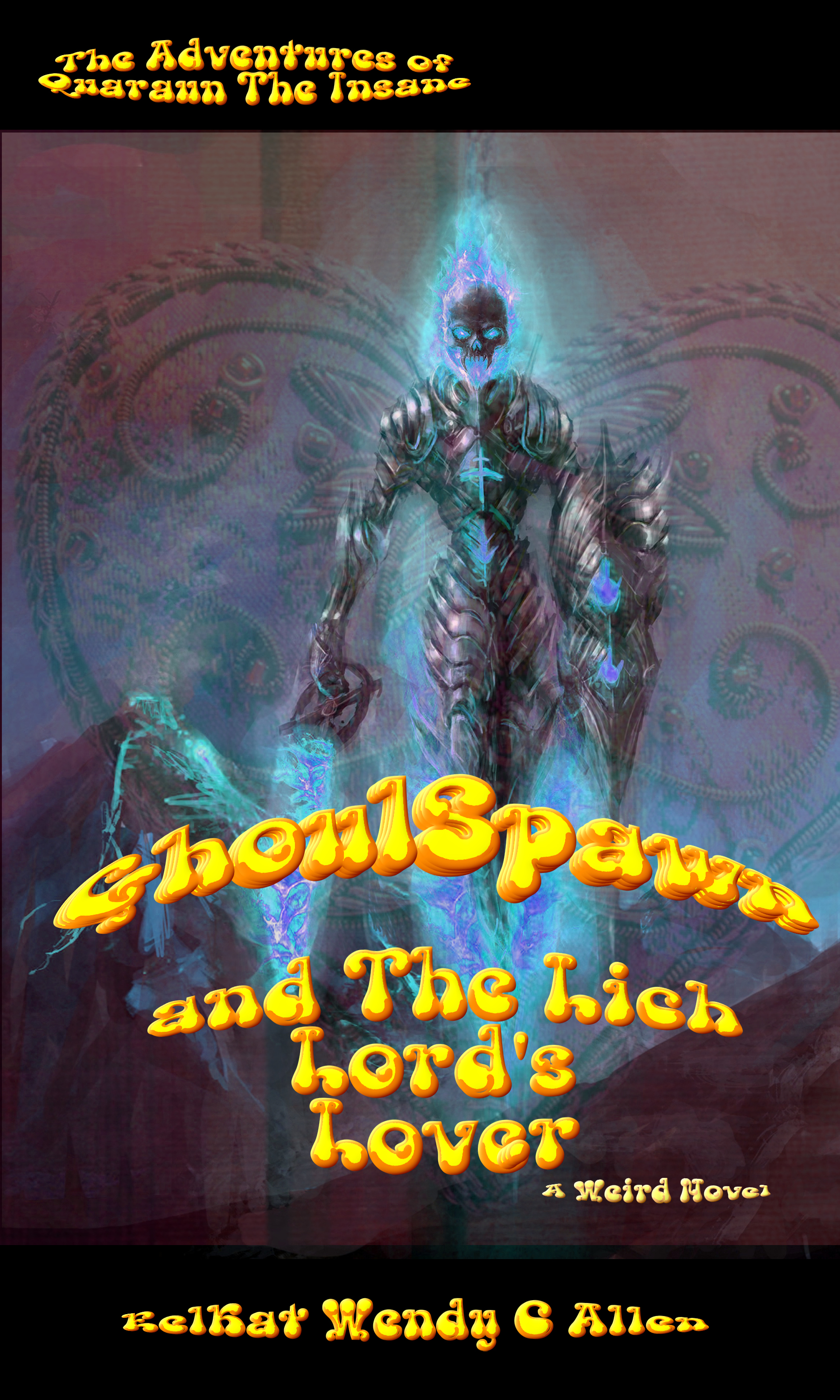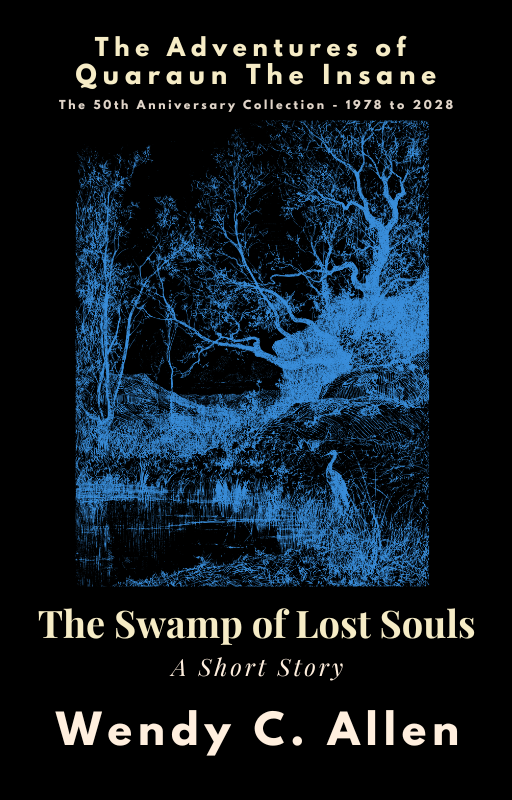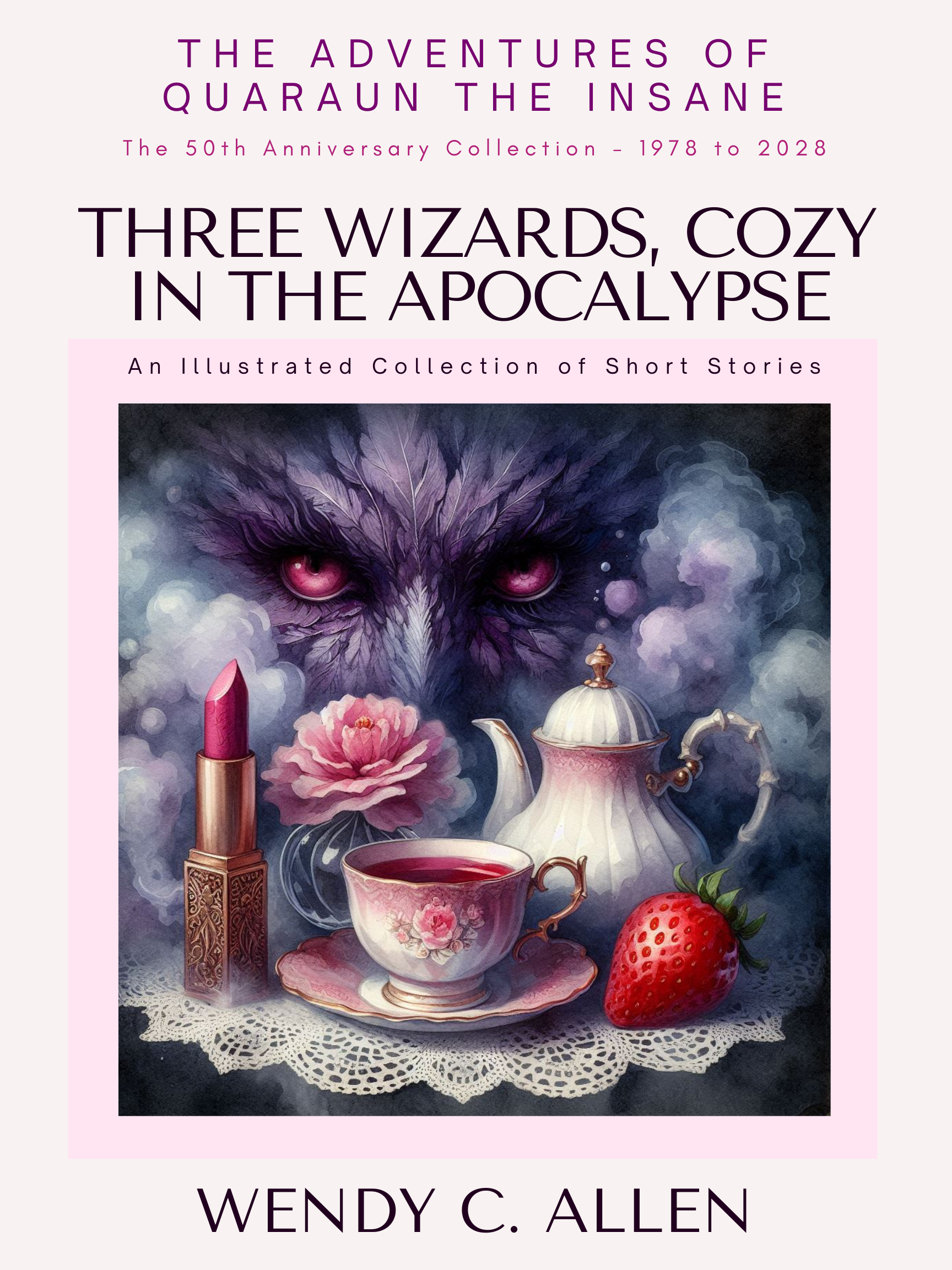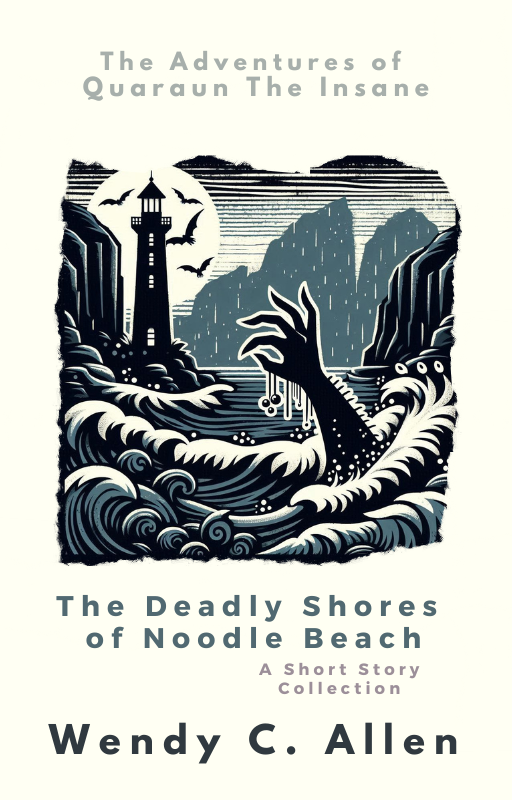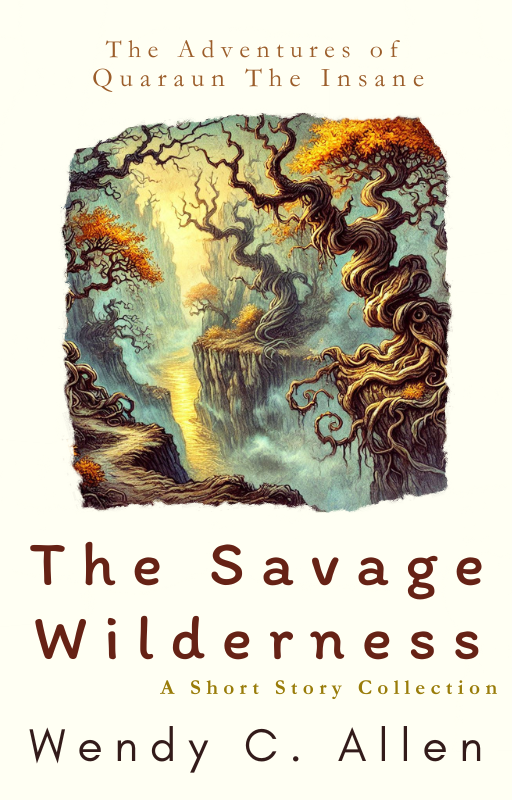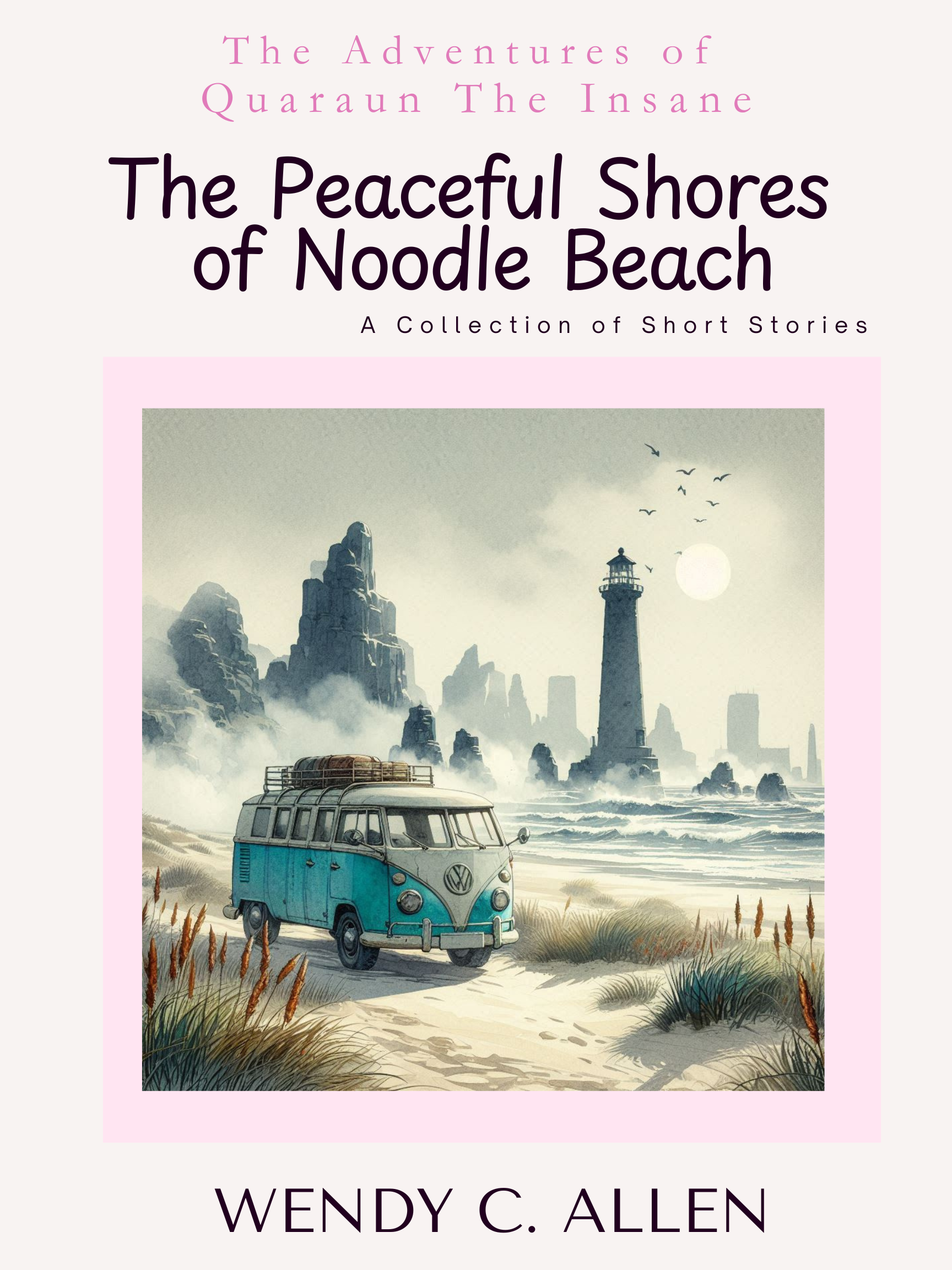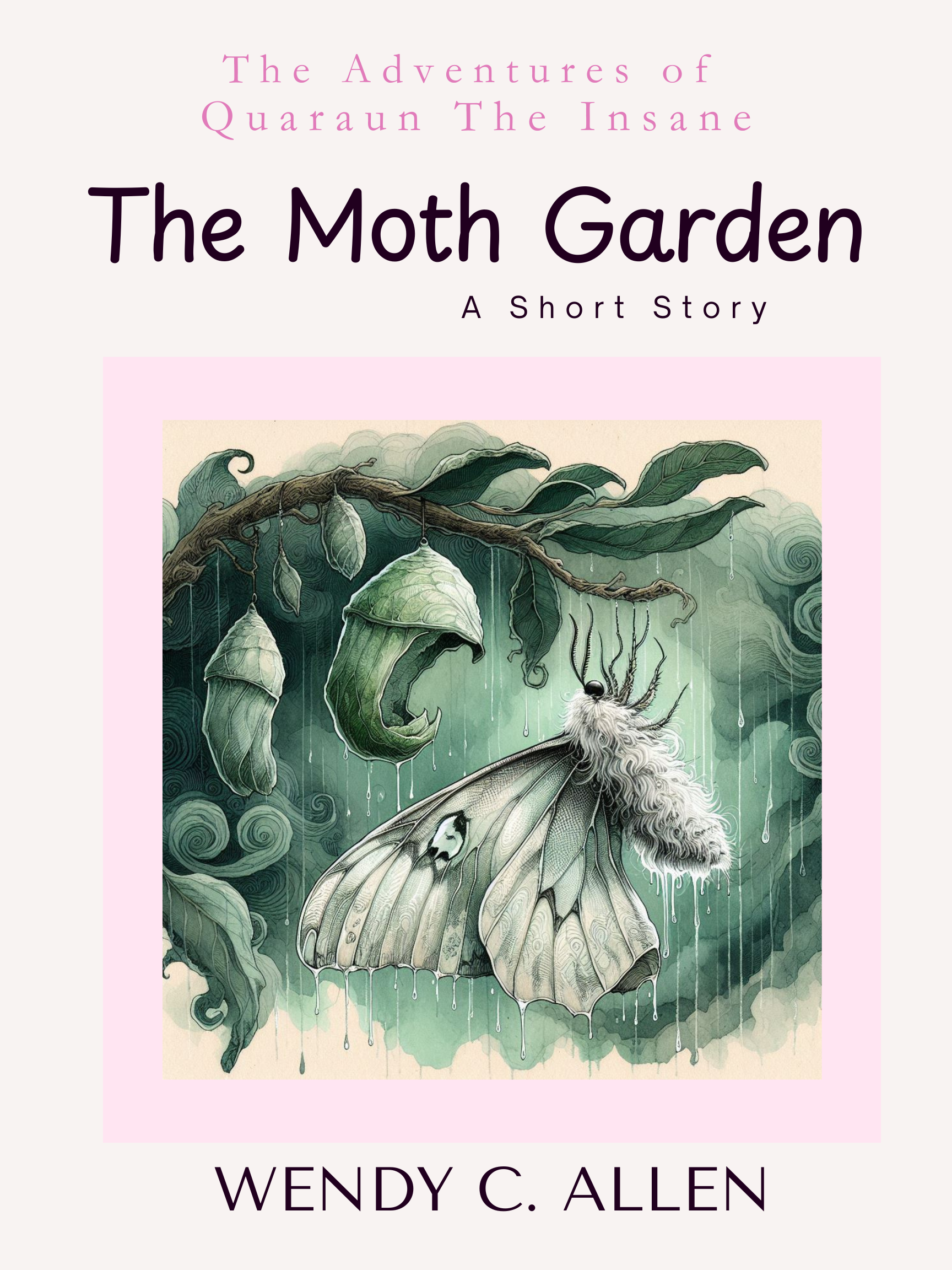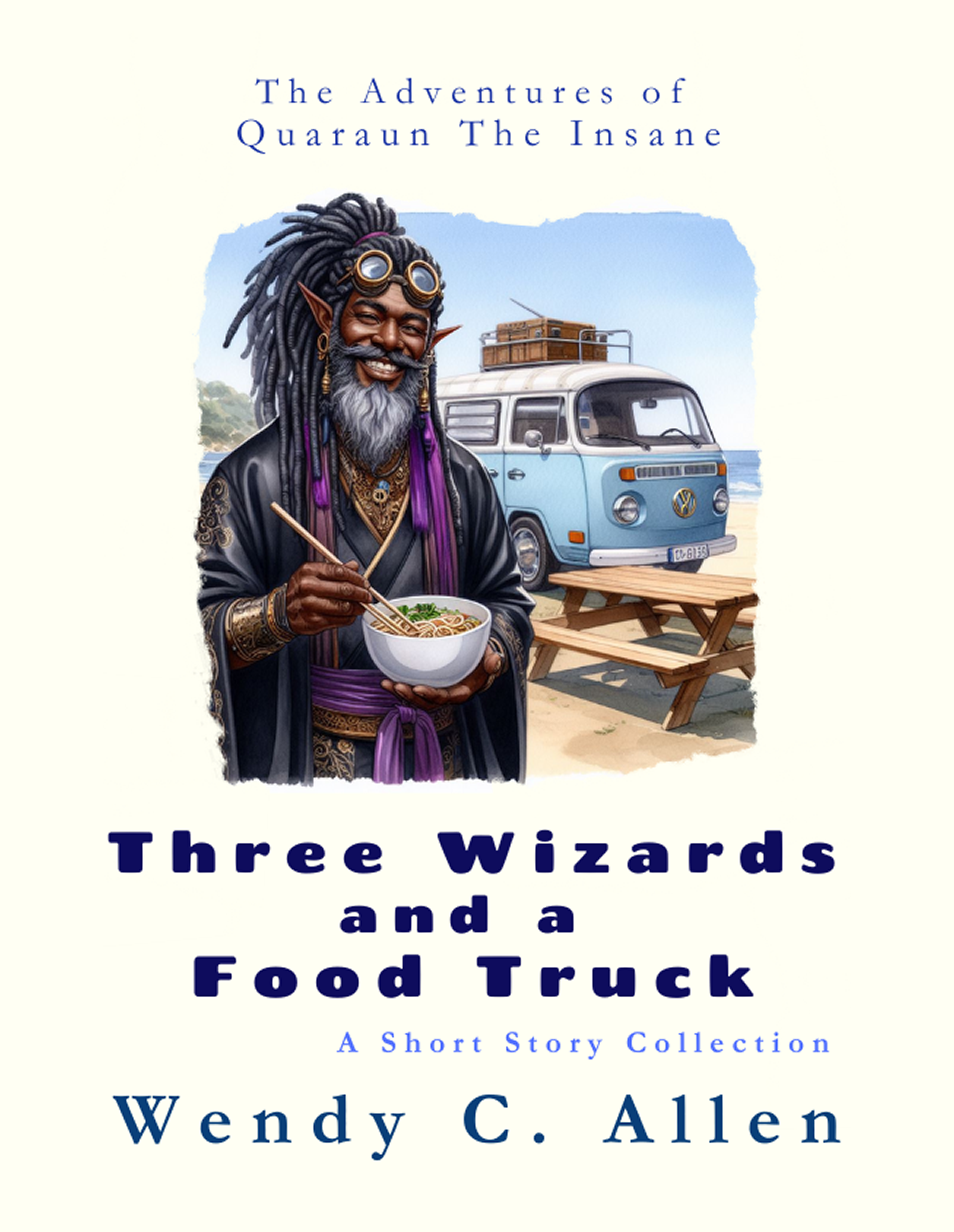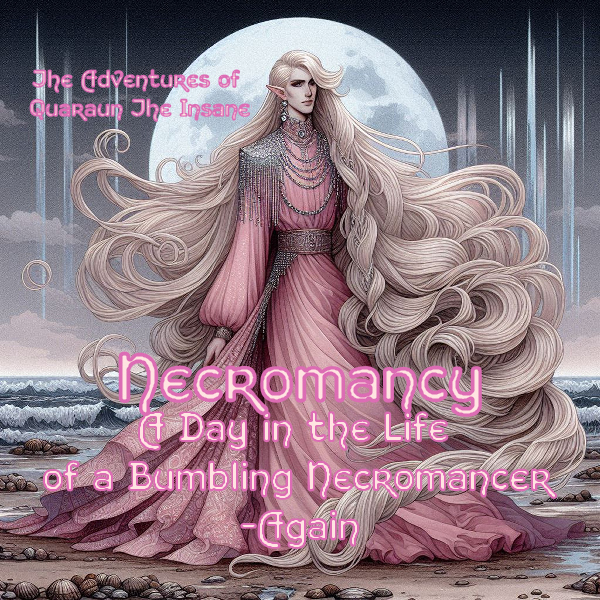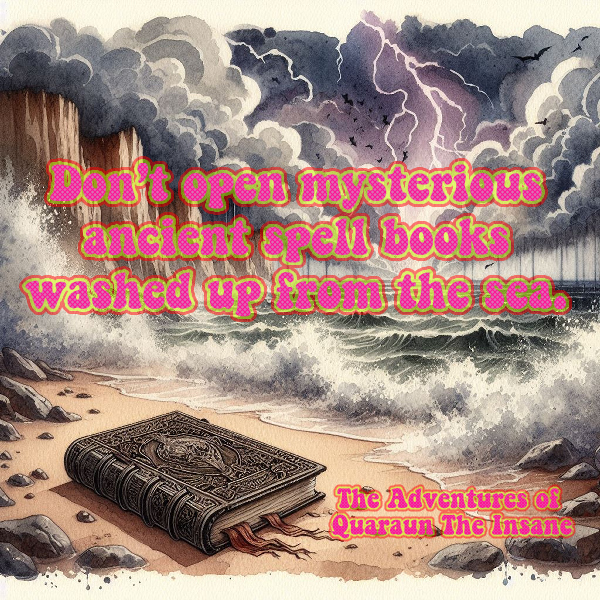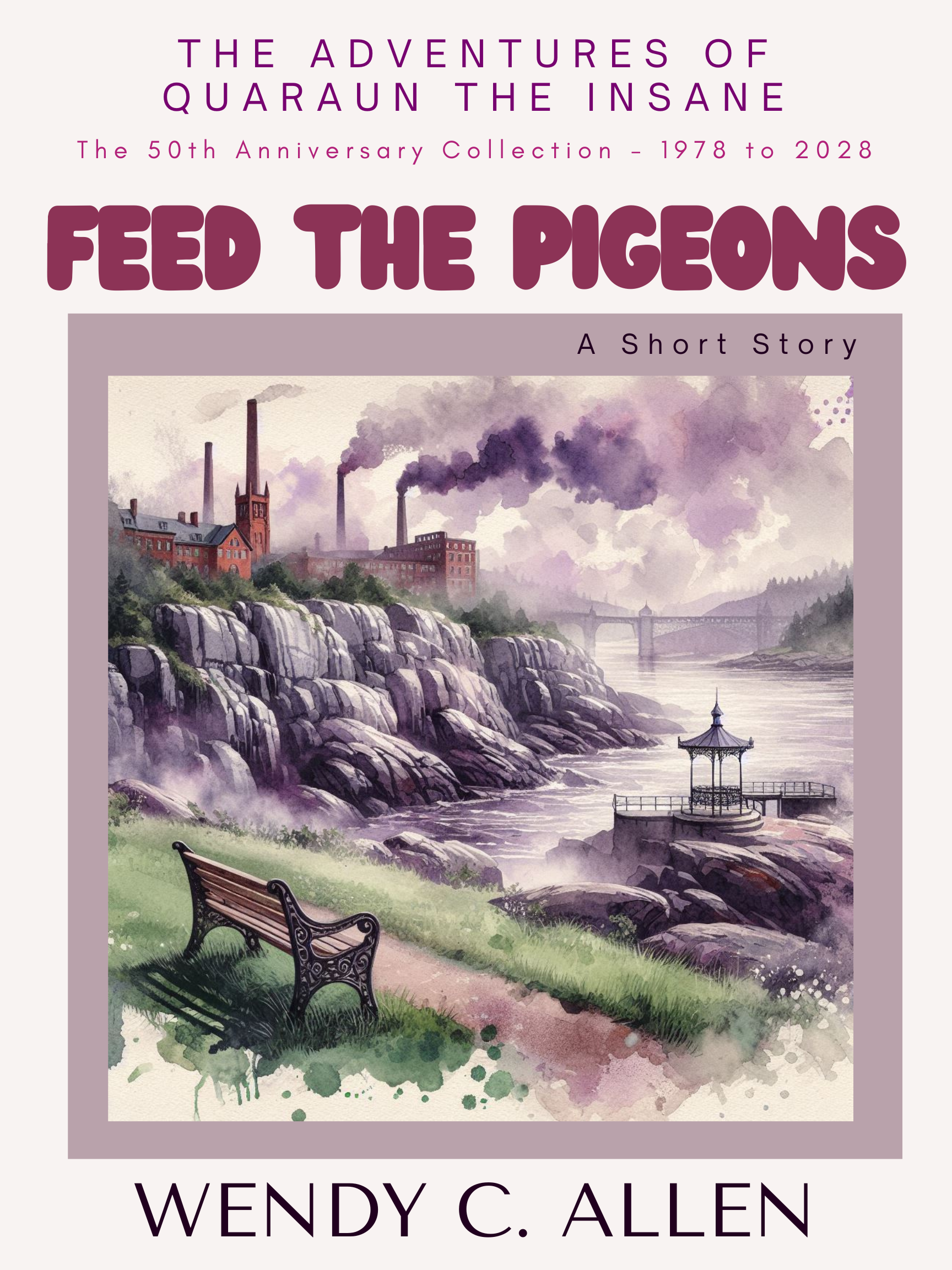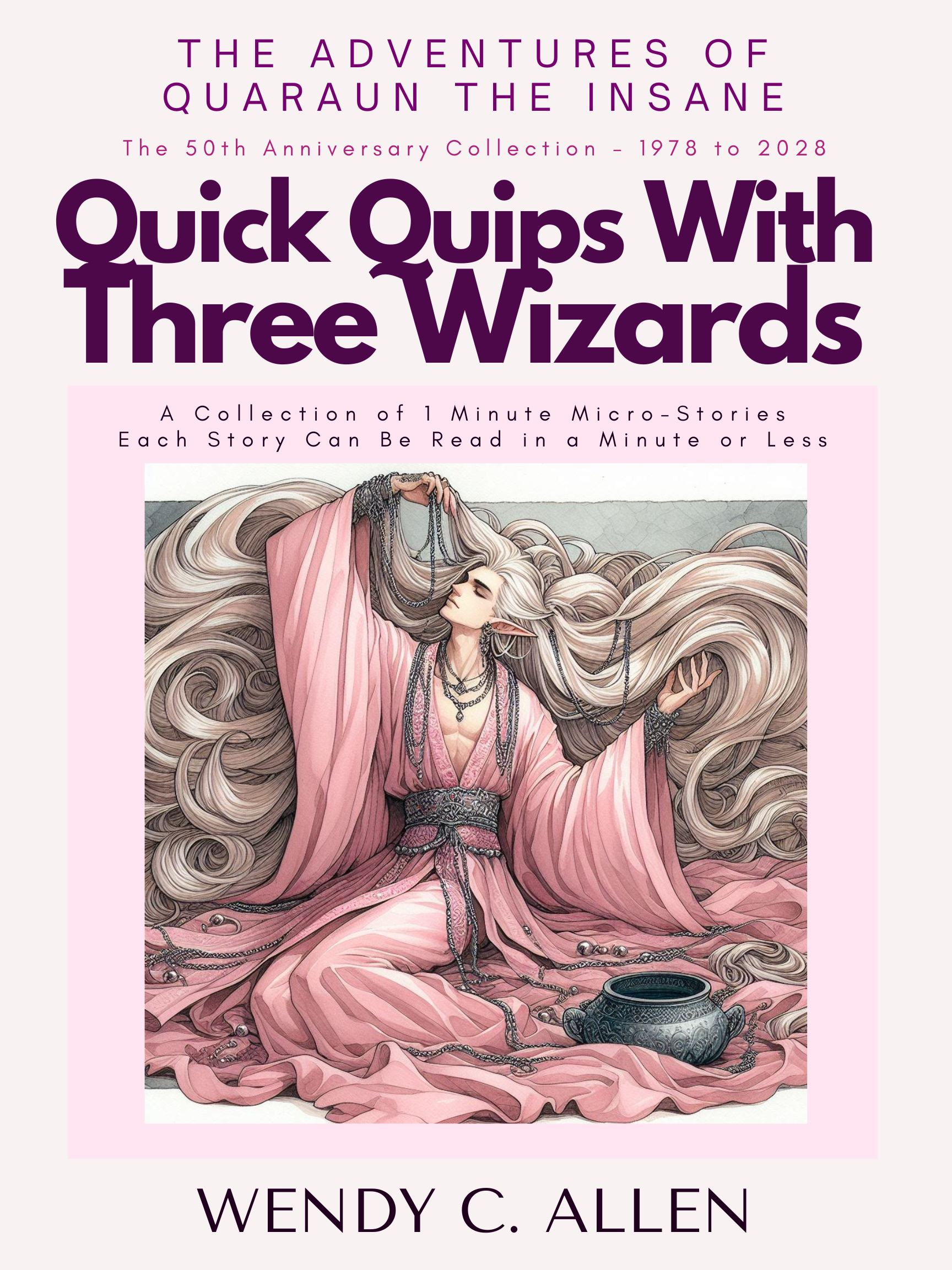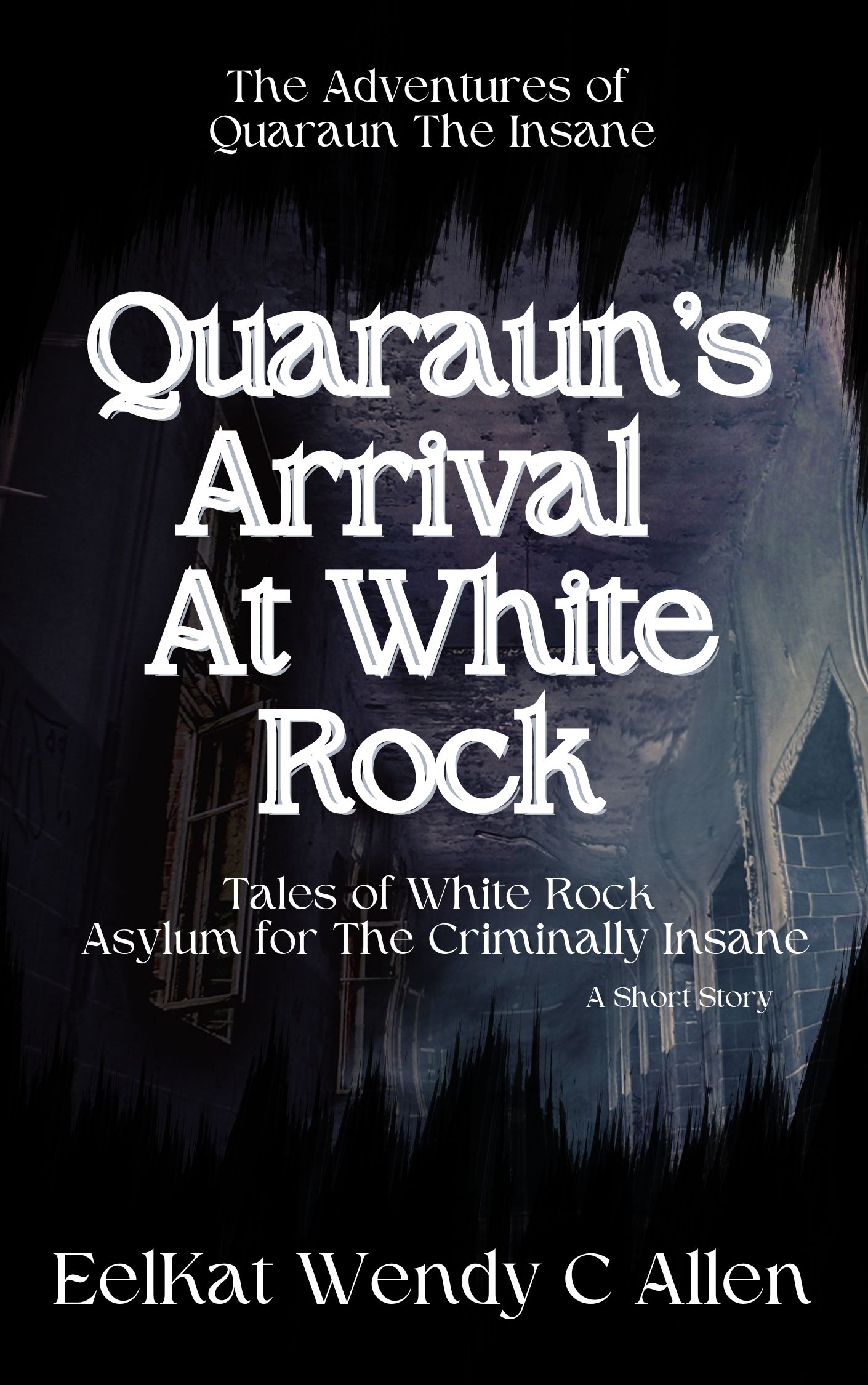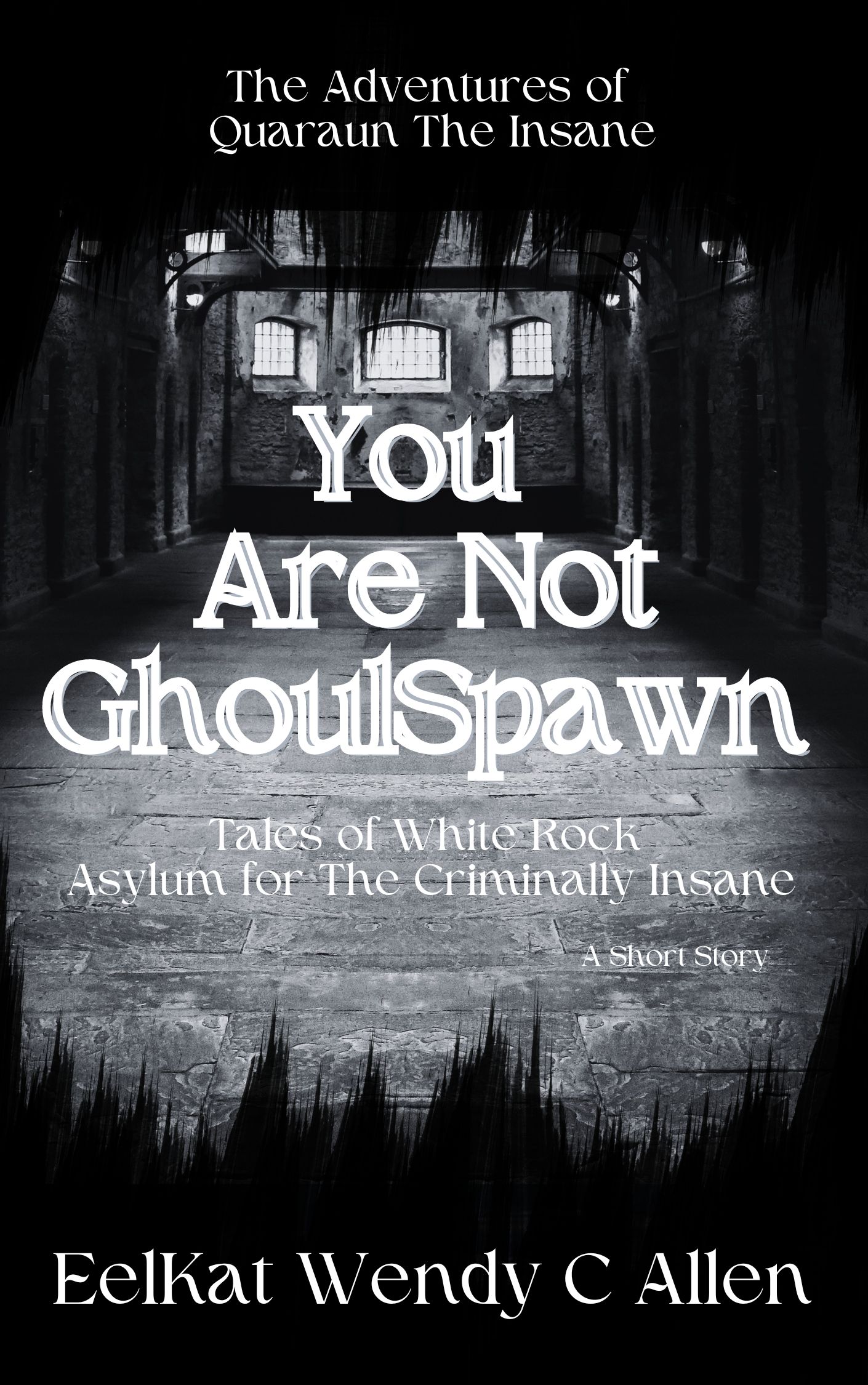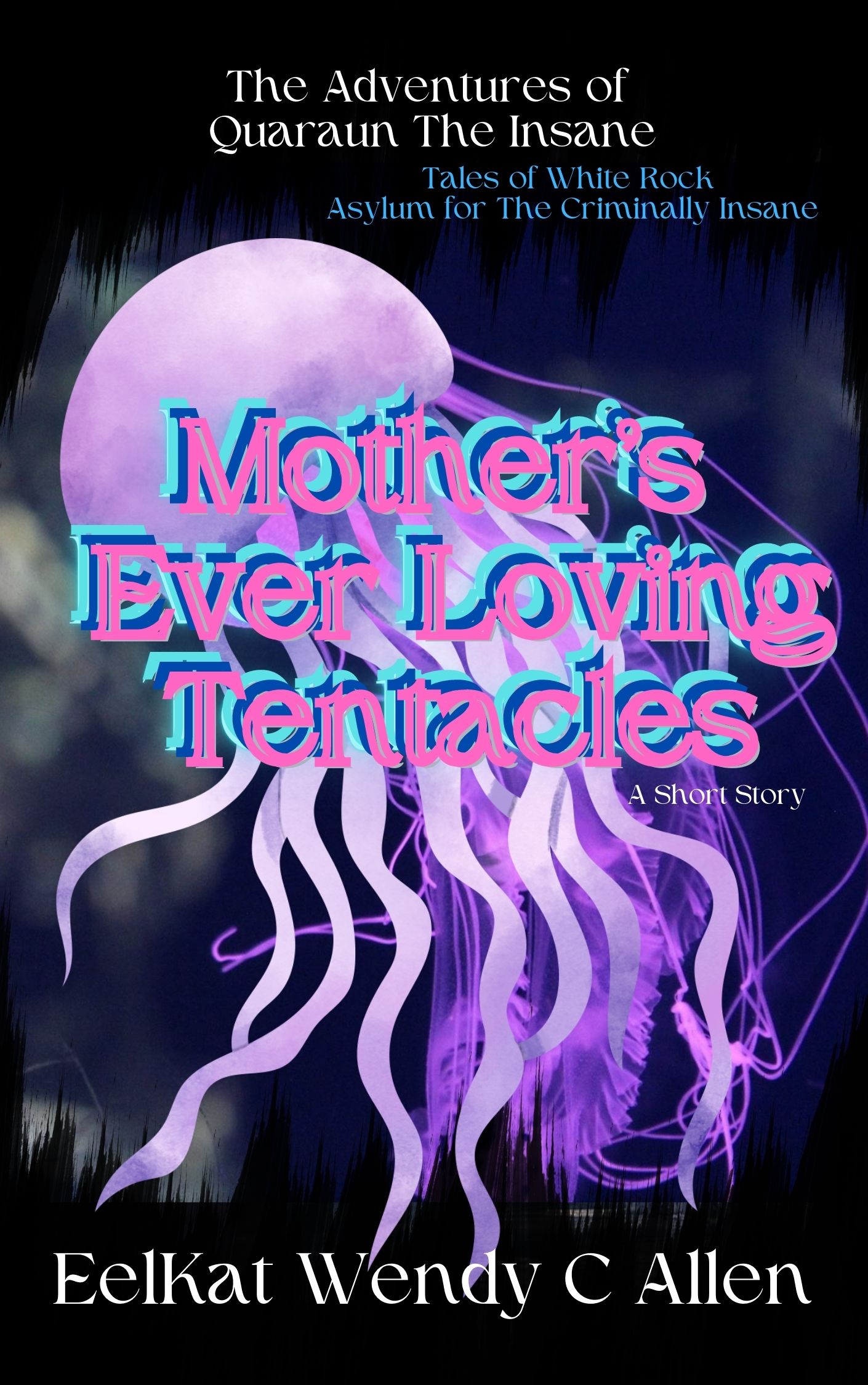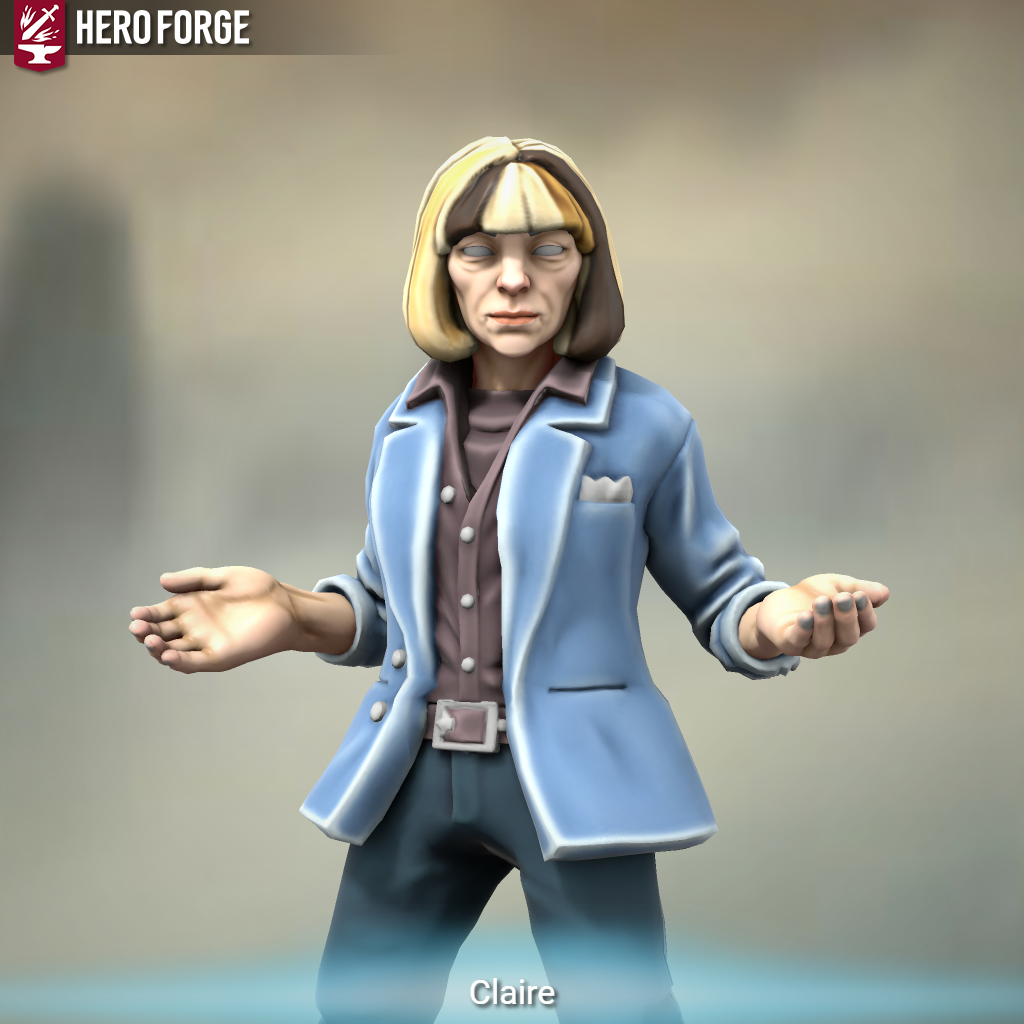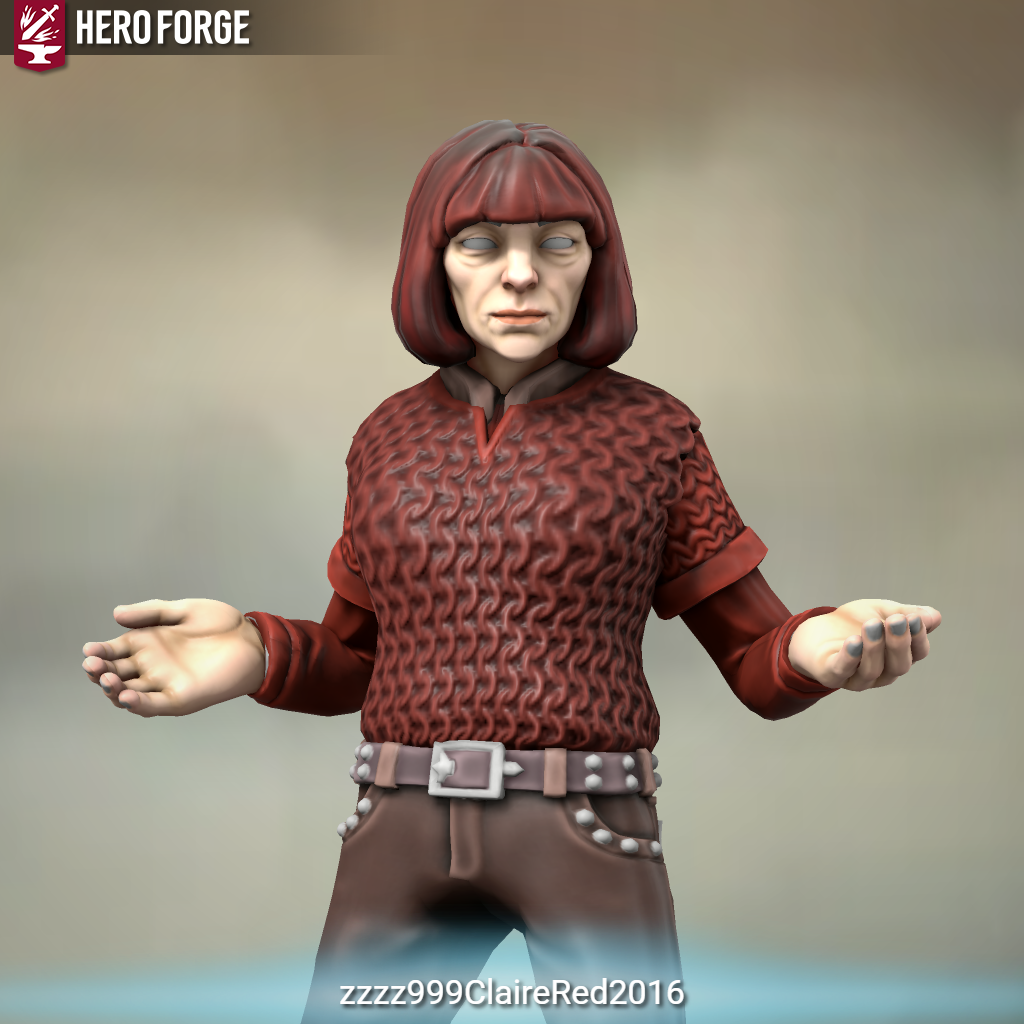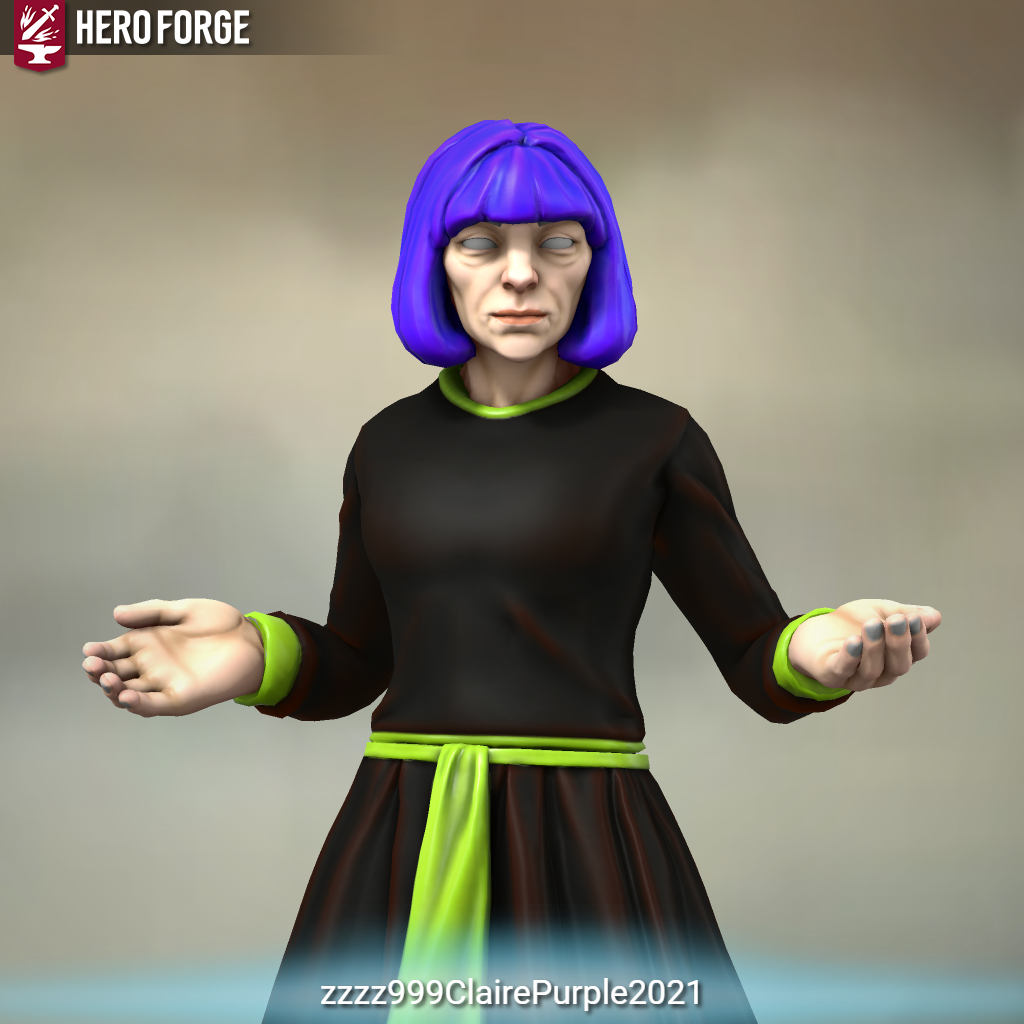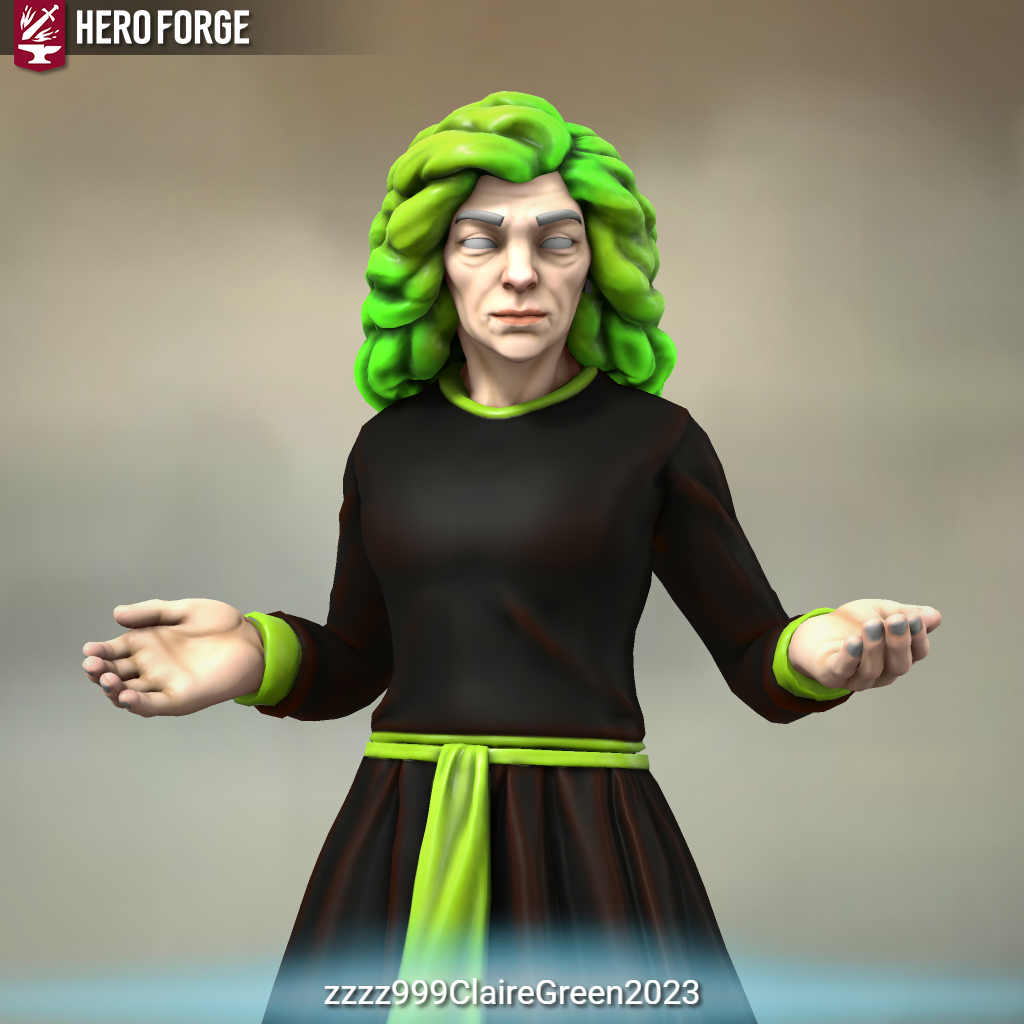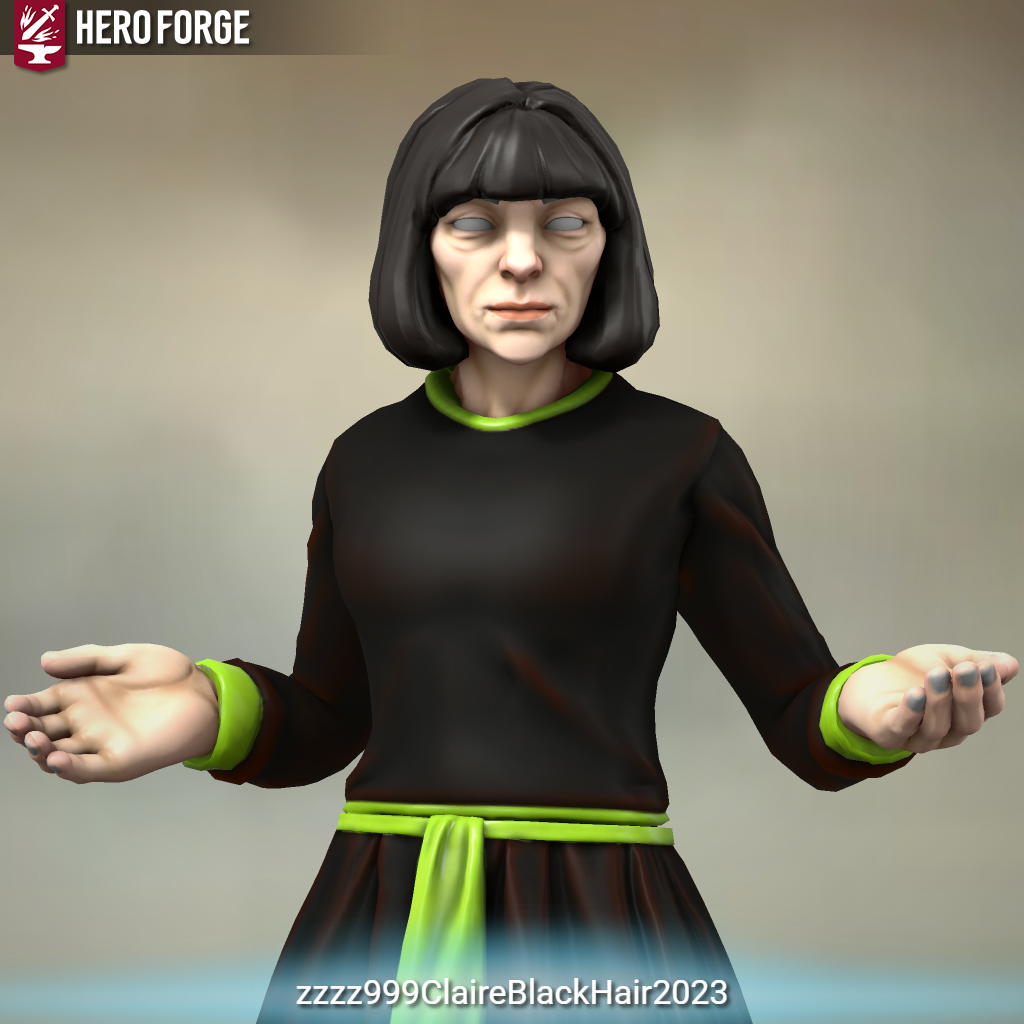Counting Down to the 2028 50th Anniversary of my first published book (September 23, 1978)
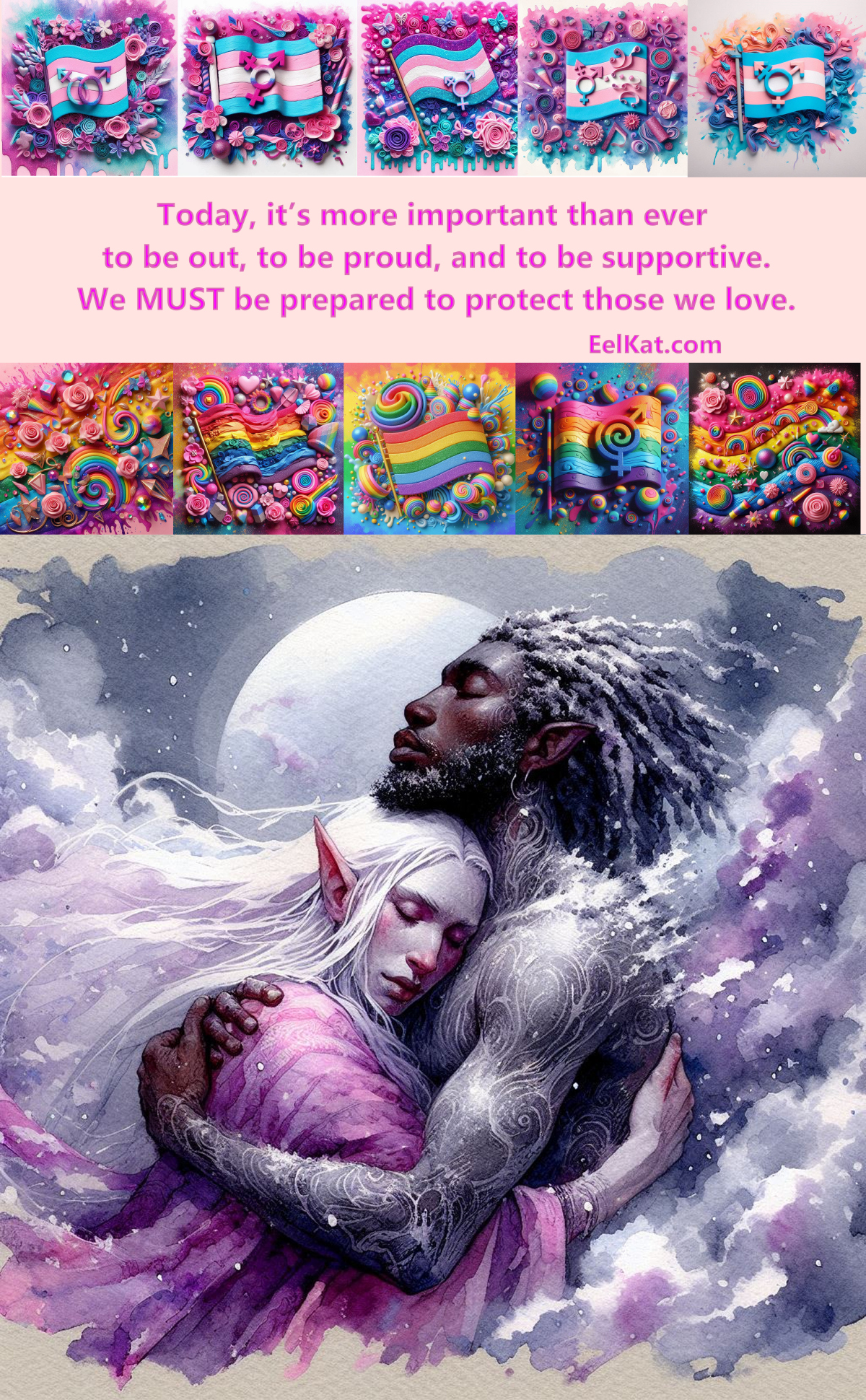 Transman Quaraun (The Pink Necromancer) and his husband King Gwallmaic (aka BoomFuzzy the Unicorn) King of The UnSeelie Court. Main characters of The Adventures of The Pink Necromancer series. Transman Quaraun (The Pink Necromancer) and his husband King Gwallmaic (aka BoomFuzzy the Unicorn) King of The UnSeelie Court. Main characters of The Adventures of The Pink Necromancer series.
This website is a safe zone for LGBTQAI+, pagans, polies, furries, and BIOPIC communities. |
Important:
Fraudulent sites are impersonating Wendy Christine Allen.
- The ONLY official website for Wendy Christine Allen is www.eelkat.com
Fraudulent social media accounts, particularly on Reddit and FaceBook are impersonating Wendy Christine Allen.
- The ONLY official social media accounts for Wendy Christine Allen are listed in the footer here at www.eelkat.com
Any websites and accounts you find online that are NOT on this list are NOT Wendy Christine Allen
Your World: Plant Life
EelKat's Guide To World Building - The Squidoo Series
Important:
Fraudulent sites are impersonating Wendy Christine Allen.
- The ONLY official website for Wendy Christine Allen is www.eelkat.com
Fraudulent social media accounts, particularly on Reddit and FaceBook are impersonating Wendy Christine Allen.
- The ONLY official social media accounts for Wendy Christine Allen are listed in the footer here at www.eelkat.com
Any websites and accounts you find online that are NOT on this list are NOT Wendy Christine Allen
While you are here, please take the time to read this:
Do you know who this woman is?
She might be the woman who murdered my son.
Your World: Plant Life | EelKat's Guide To World Building - The Squidoo Series
- What kind of plant life is there in your world?
- Lots of lush greenery?
- Are plants rare?
- Plentiful?
- Fruit bearing?
- Thorny?
- Pretty but deadly?
- Edible?
- Poisonous?
- Are plants "alive" and eat people?
- A little bit of all of the above?

- Are there many forests or is the woodland quickly disappearing?
- Or is it a place where trees could never grow at all?
Life as we know it, requires plants to survive. We need them for food, vitamins, minerals, shelter, and even the air we breath. Plants are what create the oxygen in the air we breath.
Let's say for example you've create a barren world with no plant life at all. If your world doesn't have plants then it also doesn't have oxygen...so how do people breath? Did you think of that? You need to, because you can be sure your readers will think of it and if you don't explain to then how your people can live on a world devoid of planets, and therefore also devoid of oxygen, then you've lost that all important level of reality you need to keep your readers, reading to the end of the book. Either your people don't breath oxygen or they are wearing space suits that provide oxygen, or they have encased their city in a glass bubble and have machines making oxygen, or something else. However you explain it, it MUST be explained or you'll lose your readers fast.
You see quickly how important plants are when you realize that without them, we Humans would die from suffocation due to lack of oxygen.
We are dependant upon plants for our survival and the type of plants in your world will determine the type of humanoid life can exist in that world.
A world where plants are rare, will eat mostly meat. A word where plants are plentiful will be largely vegetarian. A world with an even mix of planets and animals will be omnivores.
Fewer plants also means fewer insects, fewer birds, and fewer animals Fewer plants is likely caused by lack of water or lack of rain.
When using familiar species of flora and fauna from Earth.
>>>When using familiar species of flora and fauna from Earth.
>>>If I'm writing a fictional world with a totally different map that has magic in it, and I use a real life flora species in my fiction book, do I have to stay true to irl growing conditions like: it can only grow with lots of sunlight (and my fictional country is really gloomy and cloudy all the time)? Like I wanna use this plant but it can't technically grow here because of no sunlight.
>>>Should I just come up with my own fantasy names instead for the flora?
Many, many, many decades ago, way back when I was a teenager... I got hit with the "world building bug", and I spent several years not writing any stories, because I was too busy writing descriptions of everything in the universe... yes... universe.
I created a universe, with multiple solar systems, and at least 3 inhabited planets in each solar system, well over 100 different alien races/species, and built maps, and continents and countries and cities.
In some cities I made very detailed road maps with all the street names and houses and shops on the map, and every house had the name of who lived there, wither I ever intended to write about that person or not;
I started to create but didn't finish 3 "new languages" for 3 of the alien races; I spent weeks at the local hospital researching the medical books in the doctor's library that normally people aren't allowed to see, but I got permission from the staff because I was a published author doin research, and I created several new fictional illnesses based off real world illnesses;
and on 4 planets, I went so far as to start creating animals, birds, plants, bugs, flowers, trees ... in total I filled up 750+ 3-ring binders of lined college ruled paper and I still have those ring binders today, nearly 50 years later.
Was it a waste of time? No. Because those ring binders today are my most used reference books for the series I write, which I started publishing in 1978 and today spans 138 novels and 2,000+ short stories that are all set in that world which I built 50 years ago.
But here's what I learned over the years of publishing that series (which applies in your situation):
- * I never use the the 3 invented languages
- * I don't use about 98% of the flora or fauna I created
- * out of several hundred plants I created, only 2 plants have ever appeared in any of the stories or novels (both are based off the real world plant: Monotropa uniflora – Ghost Plant, Indian Pipe, which grows locally to where I live, and can survive in our deep north, deep freeze, heavy fog, months of no sun, weather conditions. You will probably want to look up this plant as, from what you say, it may fit well into your story as it needs no sun, no light, no warmth, in order to grow. I chose it for my plant inspiration because I needed a plant that could grow in caves in an artic region, where snow and months of darkness prevail
- * out of more than a hundred animals/birds/fish/bugs/beasts created, fewer than 10 ever appeared in any story
- * while I don't use most of the fictional illnesses, one did go one to be a primary plot point that ran through the bulk of the series
- * I created a mind-bogglingly huge and detailed magic system, and while the main character and both of his 2 lovers are all 3 wizards who use this magic system, I almost never write them ever actually doing/using magic on the page. The series focuses on their daily life activities, and they don't use magic often in every day life, so while readers are told they CAN do this or that magic, the readers never see them actually do any magic, which ends up making all my charts and rules for the magic system, kind of pointless because I never have a need to use the charts to write any scene
Well, here's the thing...
Early on in the first few novels and short stories, I DID frequently mention the made up plants and animals, BUT, it never "felt" right when going back reading the stories. It felt like hey were just thrown in for the sake of throwing them in, and they never really did anything for the story or the plot.
In short: they just plain felt out of place, like they didn't need to be there.
I'd say what the thing was "He saw a katopa run by" and than, I would have to stop the story to write a few paragraphs explaining to the reader, what the hell a katopa was. THAN, after pulling the reader out of the story immersion to tell them what a katopa was, now, I had to hope they still had enough left over immersion from before, to pick up the story where we left off and keep on reading from "He saw a katopa run by".
So, after 3 or 4 novels into the series, I started using them less and less and before I knew it I would just be saying generic things like "the forest" (let the reader imagine what trees are in there real or alien) or "the big old pine tree" (the reader knows what a pine tree is, no need to explain) or "he picked a red flower and gave it to her" (the reader knows it's a flower, they don't need to know what kind, real or fictional, they can imagine it themselves) or "he saw a blue striped gazelle like create run by, the locals called it a katopa" (tells the reader it's basically a blue gazelle, but it's alien, and let them imagine the rest) and just kept going. No more infodumps explaining what things were, no more pulling the reader out of immersion to introduce a fictional plant or animal complete with it's encyclopedia description.
In the end, my older work, read pretty clunky BECAUSE of all the fictional plants and animals peppered into it, while my newer work flows a lot smoother and uninterrupted with out the fictional plants and animals, and just using generic real plants instead.
>>>When using familiar species of flora and fauna from Earth. If I'm writing a fictional world with a totally different map that has magic in it, and I use a real life flora species in my fiction book, do I have to stay true to irl growing conditions like: it can only grow with lots of sunlight (and my fictional country is really gloomy and cloudy all the time)? Like I wanna use this plant but it can't technically grow here because of no sunlight.
Here is a link to info and pictures of the plant I mentioned above, it may well be exactly the plant you are looking for or will inspire you (as it did me) to create a fictional version of it to fit your world:
https://www.fs.fed.us/wildflowers/beauty/mycotrophic/monotropa_uniflora.shtml
>>>Should I just come up with my own fantasy names instead for the flora?
I would say yes and no.
Yes.
Make them.
Learn about your world.
It'll help you write. It really well.
I wrote tens of thousands of descriptive words about my world, and none of those words will ever appear in any story or novel, but, they helped me to better visualize my world, so that I was better able to write the stories add just see the characters interacting with their world, without having to stop writing to ask "Does this look like that?" I just knew what things were and where things were, because I had spent so much time writing about them in the world building process.
I know there are a lot of people who say that detailed world building is a waste of time because you'll use so little of what you write, and maybe that is true on some levels, but for me I spent almost 10 years doing nothing but writing detailed descriptions of the world, and not writing the stories, and for some that may look like I wasted 10 years where I could have been publishing, but, to me, looking back at that, I don't feel those 10 years of world building were wasted years, because, I learned so much about my world, that now I am writing the novels set in it, I can move through this world, in my mind, like it was real, and I am able to write a smooth, uninterrupted flow as my characters move through this world. I wouldn't be able to do that had I not spent so much time world building before I started writing the actual stories set in it.
But at the same time. MOST of what I created for the world, I never use. I have a handful of things that I fall back on and use over and over again, but the rest, just sits there untouched, waiting for the day when someday, maybe, I might, possibly, use them in a story.
So, I also say no, don't make them.
Make the things you are pretty certain you have a high chance of using, but don't make things just for the sake of making them.
That was the trap I fell into with my world building. I got addicted to building every detail of the world, when most of the story is set in one small region that is barely 15 miles across.
The bulk of the story is set in a frigid deep north, a couple hundred miles south of the polar ice cap, and so, it's buried in snow, most of the year with only 2 or 3 months where the snow melt enough to let flowers bloom. And very few animals can live in the harsh year round blizzard conditions.
And yet, I created dozens of plants and animals for deserts, dozens more for tropics, dozens more for prairies... you get the idea. I'll probably never use them, because I'll probably never write about the deserts or rainforests or prairies of my world. So, only the artic creatures and plants ever appear in the stories, and I really had no need to create the ones for the other reasons.
Do I regret creating the others? No.
I sometimes find a way to use them. Like one day a character is visiting a retired big game hunter and sees a blue and white striped gazelle like creature standing stuffed in his living room, and the MC asks what it is, and the old hunter tells the story of how this was "the last katopa" a creature from the savanna plains that is now extinct, but the last one is preserved as a record that they once existed, and this leads into him telling of his trip to that region and how he came to get this stuffed animal trophy he now has. The main characters don't ever leave their arctic region, but they are given a flashback story about another region in their world, and so once in a while, these other regions and their creatures appear in 1 or 2 novels of the series.
So, if you are writing a stand alone or a trilogy, than maybe just create what you need to use in the story and not go crazy overboard creating the entire plant system of the whole planet, like I did.
So, yeah, I'd say go for it, create new flowers for your world.

EelKat's Guide to
World Building For Fiction Writers
The Complete Article Index
The list below are the original pages written in 2003 for a WordPress Blog, and republished on Squidoo in 2007:
<<< Back To EelKat's Guide to World Building For Fiction Writers
Or Head To Another Article In This Series:
Creating a Fantasy Realm
Level of Reality
What is your world like?
What does your world look like?
What lives in your world?
Who lives in your world?
What type of animal life is in your world?
Is it a single environment realm?
Holiday and Holy Days in Fantasy Realms
What kind of plant life is there in your world?
What type of weather does your land have?
Your World: The Landscape
Your World: The Water
Cultures and Architecture In Your World
Timelines of World History
A Place To Live?
What about your population? How well do you know them?
What is the economy like?
What is family life like?
Writing Short Stories About Your Universe
Survival Stories
Fictional Travel Writing or Writing about how your characters get from Point A to Point B
Vampire Stories
Zombie Stories
Do Your Characters Match Where They Live? or Do your characters match their environment?
How do your characters act? Culture and Rituals in your world.
Peoples of Your World: Their Cultures, Traditions, and Ways of Life
Marriages & Other Such Stuff in Fantasy or Sci-Fi? Should there even be marriages like in the real world?
Churches & Religion vs Fantasy & Science Fiction
God & Satan vs Fantasy & Science Fiction
Does your world have fantasy creatures (fantasy creatures from Earth mythology: dragons, faeries, etc)? If so what kind?
Your World: Mammals
Your World: Birds
Your World: Reptiles & Amphibians
Your World: Aquatic Life
Your World: Bugs
Your World: Unique Wildlife
The Magic System: How important is it to create a magical system for your world?
Mushroom Forest
Things You Can Do To Bring Your World Alive
Writing about Snow
Some Thoughts on Writing About Real Places In Fictional Novels
My inspiration comes home: Winter in Maine
For help in creating characters in genre fiction try:
EelKat's Guide to Character Creation
Even more articles have been written for this series since then:
As there are now more then 100 articles for this series, it now has it's own index page on which to list them all, as there are just too many to keep adding them to this end of article list. You can find the complete listing of all the World Building articles here now:
Fantasy World Building...Writing Fantasy Books
| World Building For Authors |
My Answers To The Zaharam-Chapelle-Parunas
Ethnographical Questionnaire and More...
More on Worldbuilding In Fantasy Novels:
- How To Write A Novel: Question Everything Before Putting It In Your World
- Writing Fantasy Books | What will a traveler encounter on the roads in your world?
- I've everything but a kitchen sink. Wait, how'd that sink get in my pocket?
- World-building In The Quaraun Series: Creating a Fantasy World
- Why do Lovecraftian beings come to earth?
- AuthorTube YouTube Interviews on Writing Dark Fantasy Yaoi
- How To Write A Novel: In what order do you create your world?
- How To Stay Motivated To Write | Writing Fantasy Books With EelKat Wendy Christine Allen
- Writing Medieval Servants: Their jobs and their place in historical fiction.
- Part 2: Writing Medieval Servants: Their jobs and their place in historical fiction.
- Part 3: Writing Medieval Servants: Their jobs and their place in historical fiction.
- How Your Degree Affects Your World Building
- Level of Reality
- Toilets In Fiction
- Question Everything Before Putting It In Your World
- World Building for Writers
- Some Thoughts On Writing Gods, Demi-gods, Immortals, Demons, Angels, Heaven, & Hell In Fantasy Worlds
- Creating a Fantasy Realm
- The World Building Questionnaire
- Wizards vs Witches vs Sorcerers: How are they different? | Writing Fantasy Books
- Spell Casting Side Effects: Magic In Quaraun's Universe | Author Interview
- Necromancy: How will resurrection affect society as a whole?
- Child Sacrifice in Fantasy Novels | Writing Fantasy Books
- Magic Systems and How to Build Them | Writing Fantasy Books
- How To Build A Magic System
- What exactly makes an Elf an Elf? (What is the definition of an Elf?)
- Marriage in Moon Elf Culture | Character Creating & World Building | Writing Fantasy Books
- What would happen if an Elf adopted a Human baby? | Writing Fantasy Books
- Jewelry Fashions in Moon Elf Culture | World Building | Writing Fantasy Books
- Writing Albino Races Accurately - Moon Elves In The Quaraun Series
- Psychedelics In A 'High' High Fantasy World (High Elves Getting High)
- Elves, Drugs, and Opium: A Look At The Drug Use In The Quaraun Books
- How to Handle Writing Fantasy-Horror That Features Violence Against Children
- How to Write Hot Sex - Tips For Erotic Romance Authors
- Moon Elf Society | Fantasy Worldbuilding & Character Creation
Books I Use When Creating Fantasy Worlds:

*UPDATE: ADDED November 7, 2013 - I suppose one thing I should point out at this point, before we go any farther, is my use of the word fantasy throughout this series. The bulk of this set of articles was written 7 years ago in April of 2006, parts of it appearing on EK's Star Log and other parts of it appearing on my personal Squidoo account. In the 7 years since writing this I've received hundreds of emails regarding it. A common question asked being: "Why do you talk of building a fantasy world if you don't write Fantasy?"
ANSWER: Fantasy with a capital "F" is the name of a type of fiction, in other words Fantasy is a genre. I do not write Fantasy fiction of the Fantasy genre, that is correct. I do however create fantasy realms for my Science Fiction and Horror works. I write Dark Fantasy, which is a sub-genre of Horror and Space Fantasy which is a sub-genre of Science Fiction.
Did you see it? No? Let me point it out: I write about fantasy worls as the exist in Horror and Sci-Fi but I do not write about fantasy world as they exist in Fantasy Fiction.
If it is not real it is fiction, if it exists only in fiction it it fantastical, if it is fantastical it is a fantasy item, because it is not a real item, however being fantastical does not make it part of the Fantasy genre, just as not everything in the Fantasy genre is always fantastical in nature.
The word "fantasy" with a lower case "f" is a word that means "not real" and has nothing to do with the Fantasy genre (capital "F") at all. And therefore when I say "fantasy realm" I mean a world that is NOT the Earth on which you and I live on in the real world, and am in no way, shape, or form referring to the Fantasy genre.
The methods I use to create my fantasy realms can be applied to ANY genre: Fantasy, Science Fiction, Horror, Romance, Western, etc.
2013 World-Building Series UPDATE:
Due to issues with content scraping, outright plagiarism, some of my articles appearing on OTHER Squidoo member accounts without my permission, and many of my "Squidoo articles" being stolen off Squidoo and posted without my permission on various blogs and sites including Wikipedia and Helium; all of my articles are in the process of being removed from Squidoo.
This series of World Building articles in one that has been heavily plagiarized over the years and as of September 2013, it can only OFFICIALLY be found here on EelKat.com - if you find it posted elsewhere, know it was stolen and I am not receiving royalties for it.
2014 Update:
As you know, or not, Squidoo owners Bonnie and Kimberly-Dawn stole thousands of Squidoo articles from Squidoo members, and tried to pass them off as their own, resulting in the lawsuit against Squidoo owners for the theft of tens of thousands of articles.
More than 100 of my articles were transferred off my Squidoo account and moved to Bonnie's account,
- including the one about my cars The Dazzling Razzberry,
- the one about The World's Most Haunted Car,
- the one about the theft of my car,
- my Autism lenses,
- my Lord Sesshomaru series
- and my Amphibious Aliens article;
while my authorship and writing articles, including this world-building series were deleted off my Squidoo account and transferred to Kimberly-Dawn's account!
!!!!!!!
I am shocked and flabbergasted at what these 2 women have done. That they thought they could get away with stealing so many articles from so many authors! Buying Squidoo from Seth Godin, did not give then the rights to our articles and these two horrible women had no right to delete them off of our member accounts and republish them on their own accounts, trying to pass them off as their own.
More then 100 Squidoo authors have gathered together in lawsuit against Squidoo owners, Bonnie and Kimberly-Dawn. The result of that is, Bonnie and Kimberly-Dawn, to avoid their asses being sued to hell and back, have now transferred the Squidoo lenses back to their original owners and deleted the entire Squidoo website.
Squidoo is officially gone. It exists no more. Squidoo is dead. Most Squidoo writers have opted to move to Hub Pages as HubPages has bought the remaining shambles of what is left of Seth Godin's Squidoo after Bonnie and Kimberly-Dawn massaquered it in their article stealing frenzy.
While I do have a HubPages account and my remaining Squidoo Lenses can be found there temporarily, they are being moved here and deleted off HubPages as I move them
April 2017 UPDATE:
As of now, all on my 600+ Squidoo pages are now moved here to EelKat.com and no more are remaining on HubPages.
It's hard to believe, Squidoo has been gone for 4 years now. It was such a big part of my life for a decade.
What Is This Site?
I'm an author. This is an author home page. It's about me, my life, my books, my hobbies, my home town, and anything else that applies to me and my life.
Since starting my writing career in 1978, I have written 130+ novels, 2,000+ short stories, 6,000+ non-fiction articles (ALL are found on this site), a few dozen stage plays, 12,000+ blog posts, and a few comic book scripts for Disney's Uncle Scrooge and Donald Duck (I only worked for Disney one year (in 2005) and only wrote a few stories for their Danish comic books).
NOTE: I ONLY write the Quaraun series (aka The Twighlight Manor series aka The Adventures of Quaraun the Insane). In recent years there has been an issue with impersonators trying to pass books off as written by me, notably several non-fiction and Erotica books. I write neither nonfiction nor Erotica.
ALL of my books and their cover arts are listed on my website here. Beware of any books you find claiming to be me. If the books are NOT listed here on my website, they are NOT my books.
In fiction works, I specialize in Weird/Bizarro Tales set in 40th century CyberPunk-Quasi Medieval, Cozy Dark Fantasy and Science Fiction worlds featuring an intersex Elf and his Faerie husband main characters. I DO NOT WRITE ANY OTHER SERIES - THIS SERIES IS THE ONLY ONE I WRITE.
Non-fiction (found ONLY here on my site) is daily updates of events in my life, and how-tos on how I write my novels.
I DO NOT write Erotica.
I DO NOT write books with HUMAN characters.
The Erotica books and books with Human characters, that you are finding, are written by scammers trying to impersonate me.
There is an ongoing FBI investigation into this matter. If you find any such books, please report them to FBI Agent Andy Drewer @207–774–9322
People always ask why I have a video recorder running 24/7. Watch these 4 videos of The Scarborough Walmart.
I have a video recorder running 24/7. Because this parking lot is where I was attacked a second time by the woman who crippled me with the golf club at Southern Maine Community College in 2013 (who also murdered my 8-month-old son at the same time) this is the location of her 2nd attack, the July 2016 attack with a shopping cart, the attack that left me in a wheelchair and despite over 200 "security cameras" and signs saying there are cameras in use... the police did not find even ONE actual REAL camera. Every "security camera" on this building and parking lot was ALL fake "dummy cameras" and that is why there is no video footage of my son's murderer.
I started carrying a camera 24/7 the very next day after Scarborough police informed me they could not identify the blonde woman who attacked me or her gold Volvo 240GL station wagon, because EVERY CAMERA at this store's parking lot was an empty case with no real camera inside it. My son would be 12 years old this Christmas 2025, and his murderer walks free, still unidentified because this parking lot did not have real cameras.
Those things that look like cameras on the building and light poles, are fake, according to the Scarborough Police Department. That is why I have a camera running 24/7, because my son's killer walks free because there was no camera the day we were attacked.
While you are here, please take the time to read this:
Do you know who this woman is? She might be the woman who murdered my son.
146 Portland Ave, Old Orchard Beach, Maine, is NOT FOR SALE.
And I'm sick of real estate agents who are too incompetent to research land ownership before they show up to stick a for sale sign in my yard.
The fact of the matter is, my son was murdered in 2013, and the friends and family of the murderer think it is funny to keep ILLEGALLY listing my land for sale, because apparently their child murdering bitch friend didn't hurt me enough by crippling me with a golf club, ripping my baby out of my 8 month pregnant belly and beating his brains out on the ground with a golf club.
Also, her friends and family like to gaslight me by doxing me on ufo and alien abduction forums, while pretending to be me, and trying to make it look like I believe in ufos or aliens, even though I think people who believe in ufos are raving lunatics and people who claim to be alien abductees are crazy.
So, yeah, my son was murdered and the murder's friends and family endlessly harass me, my friends, and my family both online and offline, and I'm not happy with it at all.
There is an ongoing FBI investigation into this matter.
The FBI is looking for information into:
- identifying my son's murderer,
- identifying the scammers who listed my land for sale,
- identifying the impersonators who pretend to be me both online and offline,
- the harassers who are harassing the homeless man and sending the UFO nuts to harass him...
- If ANYONE tells you 146 Portland Ave Old Orchard Beach, Maine is for sale:, please report them to FBI Agent Andy Drewer @207–774–9322
- If ANYONE tells you I believe in aliens, demons, or UFOS, please report them to FBI Agent Andy Drewer @207–774–9322
- If ANYONE tells you my homeless friend is an alien, a demon, a cryptid, or named Etiole for sale:, please report them to FBI Agent Andy Drewer @207–774–9322
I'm going to repeat it because I'm tired of people showing up and making offers:
146 Portland Ave, Old Orchard Beach, Maine, is NOT FOR SALE.
There is NO ONE who has authorization to use my land.
NO ONE.
Not my mother.
Not my father.
Not Ben.
Not my mother’s Atwater relatives.
No one.
If ANY ONE hires you to do ANYTHING on my land, know that you are doing it ILLEGALLY and WITHOUT my knowledge or permission.
My mother has ZERO legal right to hire you to do anything at 146 Portland Ave. Old Orchard Beach, Maine.
My father has ZERO legal right to hire you to do anything at 146 Portland Ave. Old Orchard Beach, Maine.
Ben has ZERO legal right to hire you to do anything at 146 Portland Ave. Old Orchard Beach, Maine.
My mother’s Atwater relatives have ZERO legal right to hire you to do anything at 146 Portland Ave. Old Orchard Beach, Maine.
While you are here, please take the time to read this:
Do you know who this woman is? She might be the woman who murdered my son.
How did you build your audience?
Not online, that's for sure.
aka How to sell ten million books
aka How I sold ten million books.
The Park Bench Method of Writing
(just the article)
or
The Park Bench Method of Writing
(with the list of 10k writing prompts - takes a LONG TIME to load - SEVERAL MINUTES!)
I Think UFO and Alien Believers Are Weird Here's Why...
Does every writer have to deal with this shit?
|
Thank you for stopping by and have a nice day! ꧁✨🌸🔮🦄🔮🌸✨꧂ And if it’s your birthday today: ִֶָ𓂃 ࣪˖ ִֶָ🐇་༘࿐꧁ᴴᵃᵖᵖʸ☆ᵇⁱʳᵗʰᵈᵃʸ꧂🤍🎀🧸🌷🍭 |
 |
Get an email whenever Wendy Christine Allen 🌸💖🦄 aka EelKat 🧿💛🔮👻 publishes on Medium.
I also write on these locations: | Amazon | Blogger | GumRoad | Medium | Notd | OnlyFans | Tumblr | Vocal |
